In August, we continued traveling through Bolivia and onwards to Peru. Along the way we saw dinosaur tracks, a military parade celebrating Bolivia’s independence, had some really good food in Sucre, mountain biked down the world’s most dangerous road in La Paz and visited Inca ruins at the Island of the Sun.
1 August, Traveling from Samaipata to Sucre
We began the month traveling by night bus from the lovely small town of Samaipata to Sucre, the constitutional capital of Bolivia.
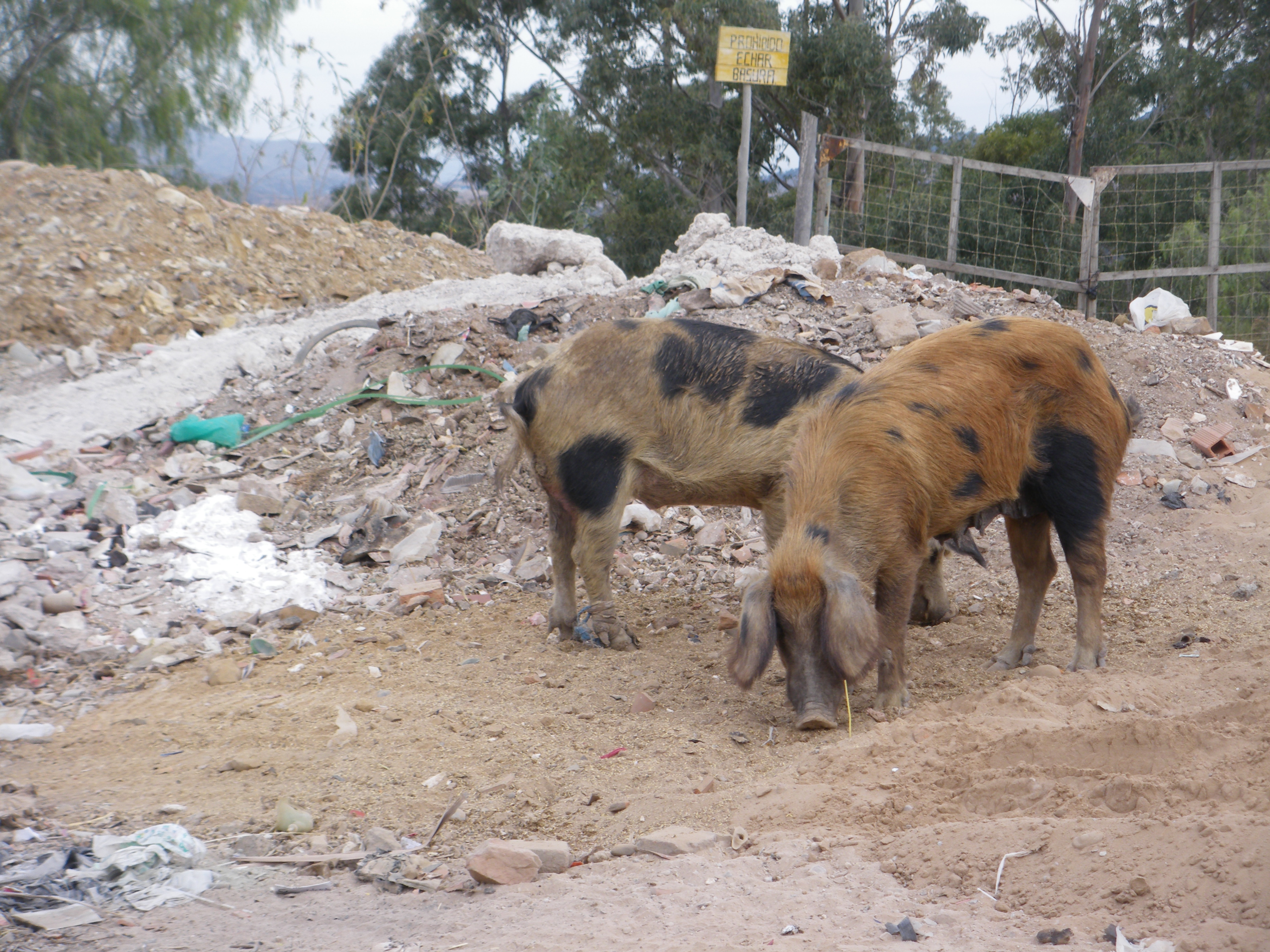
We stopped in the middle of the night next to a church in a small unknown town, and everybody streamed out of the bus. Obviously this was a restroom break, but in Bolivia that implies something else than it would in most other countries.
Most passengers didn’t even walk five meters before unfastening and pissing right there in the street between the bus and the church. A proper restroom was or even a kios was nowhere to be found.
About 30 meters away, a family or group of friends were sitting around a table in a little restaurant. For them, it must have been a sight to behold; an entire bus full of people (men and woman) appearing in their field of view, pissing in and around the street.

With an area of 30 meters around the bus covered in dozens of streams of urine, everyone promptly returned to their seats and the bus continued to Sucre as if nothing funny ever happened.
In hindsight, we were lucky that the bus stopped at all. We have been warned that the busses travel for hours and hours without stopping for breaks and one traveler even told us that she suspected people of urinating in their seats.
Little did we know that urine (and urinating) would become a recurring theme in Bolivia. Men and boys (and sometimes woman) would piss at the side of a traffic filled street in the middle of town and in broad daylight. That awful smell is omnipresent and a not so gentle reminder that everything outdoors is fair game to be used as a lavatory, and not just by the roaming packs of dogs.
2 August, Sucre: Exploring Cólon
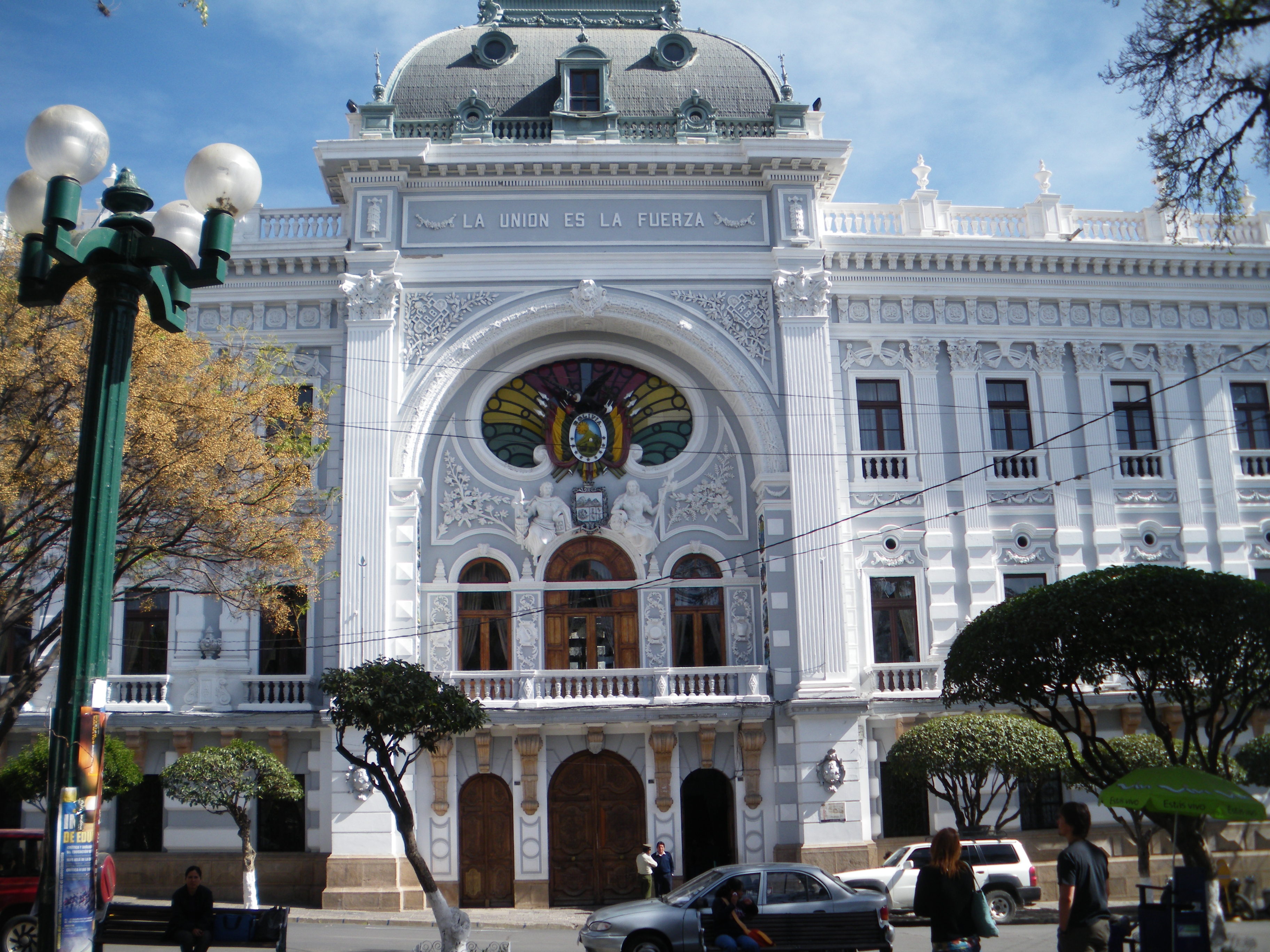
Manuela, our friends Tony and Sofiaand myself arrived early the next morning in Sucre and took a taxi to our hostel.
We headed off to the nearby Christobal Colón street, to find a cheap place for lunch. There were a few Plato Familiar restaurants in the area, with not much separating them concerning outward aesthetics, so we decided with our empty guts and chose one at random. The eatery was family owned and the children were also involved, either taking orders or carrying plates of food. The menu is set. Everyone eats the same lunch, with the advantage being that it is incredibly cheap. Lunch consisted of a soup (described by Sofia as reminiscent of Minstroné), a main dish consisting of grilled meat with rice and a small salad, and an orange for desert. All for 9 Bolivianos per person, about €1.
3 August, Sucre’s markets
The city center of Sucre is actually quite pretty, with white colonial buildings backdropped by large mountains in the distance.
What is really remarkable and noticable about Sucre, is the everpresent juxtaposition of cultures and generations. The old and the new clash on almost every street. I would walk down the street passing an old woman in traditional clothes selling nuts, and then a few meters later pass an internet shop filled with young kids playing World of Warcraft.

Travelers looking for something more authentic than a South American varitation of western consumerism, will inevitably enjoy Bolivia. The woman in particular all wear traditional outfits consisting of Bowler hats, braided hair down to their hips decorated with tassles at the ends and colourfully weaved ponchos, scarves and bags. Parts of the outfit, the hat in particular, can be attributed to Spanish influences, but the end effect is unquestionably and endearingly native.
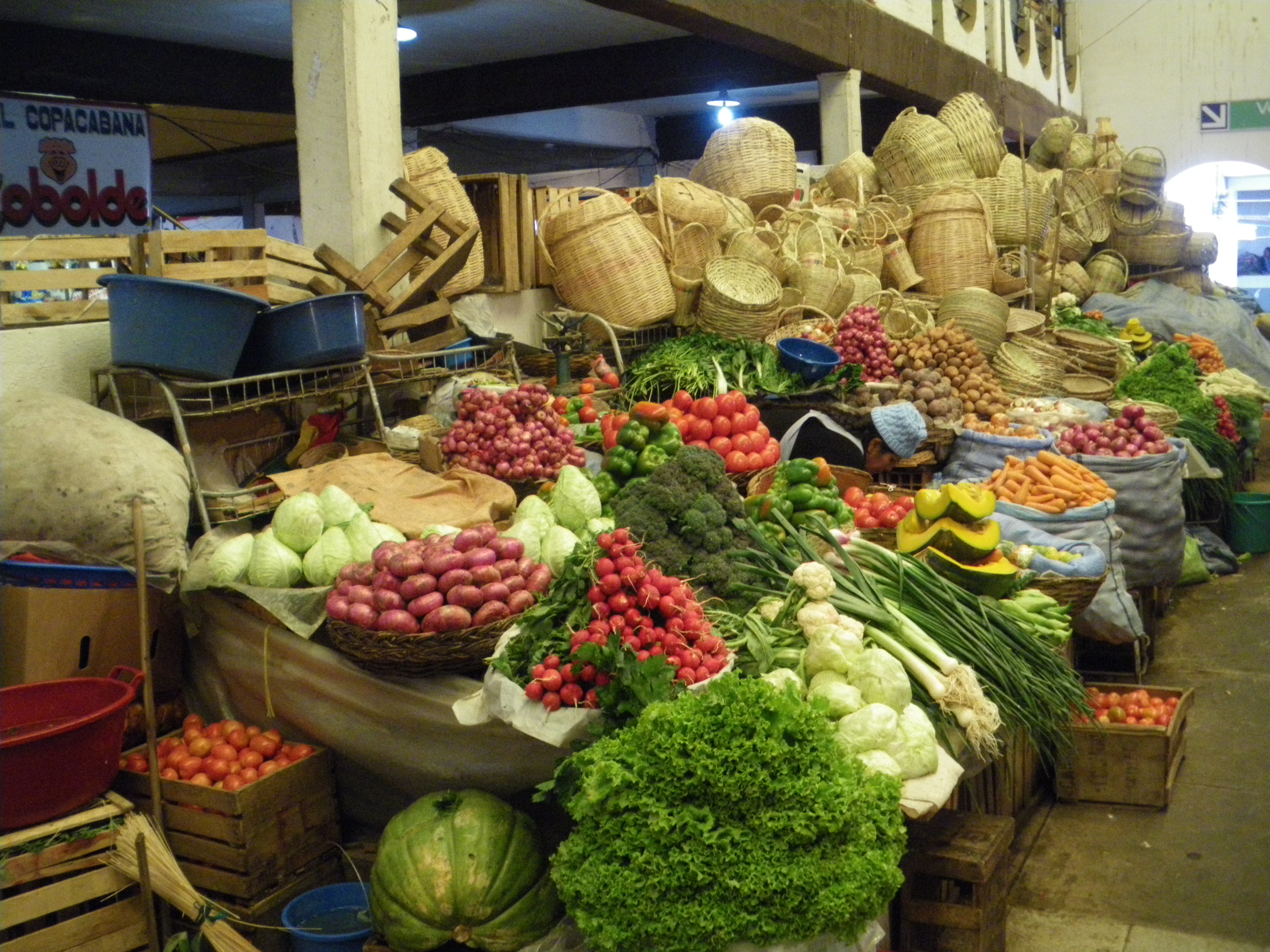
Going shopping in Sucre (and Bolivia in general) is an experience in and of itself. Supermarkets are few and far between, and Bolivians instead buy and sell almost anything you might need at the local market or on the street. The main market in Sucre is quite big and well ordered. The woman selling cosmetics, soap and beauty products are all clumped together in one area.
Another area is reserved for stalls with food products (pasta, rice, canned food, sauces etc.), yet another section contains meat sellers, then fruit sellers, cakes, sweets, toys and on and on. The whole area bustles with activity and shopping seems to be a much more social experience, with the inevitable small talk and bartering as one moves from stall to stall to buy the day’s or week’s essentials. You cannot walk through the market without people calling you over to try and sell their warres. Their sales call is usually a three times repetition of the particular item they want to sell. Such as Mandarina!, Mandarina!, Mandarina! when selling fruit, or even La Paz!, La Paz!, La Paz!, when selling tickets at the bus station.
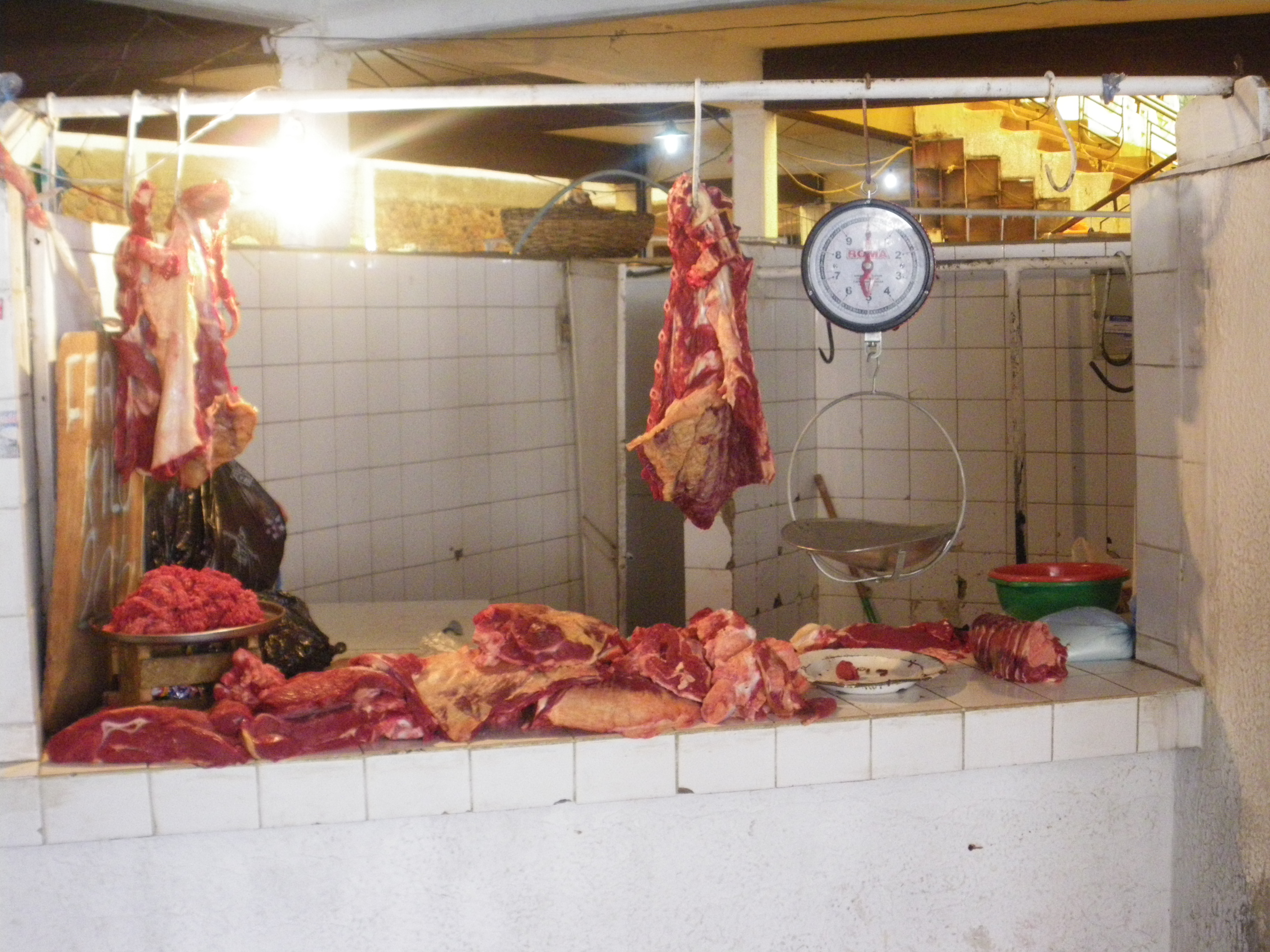
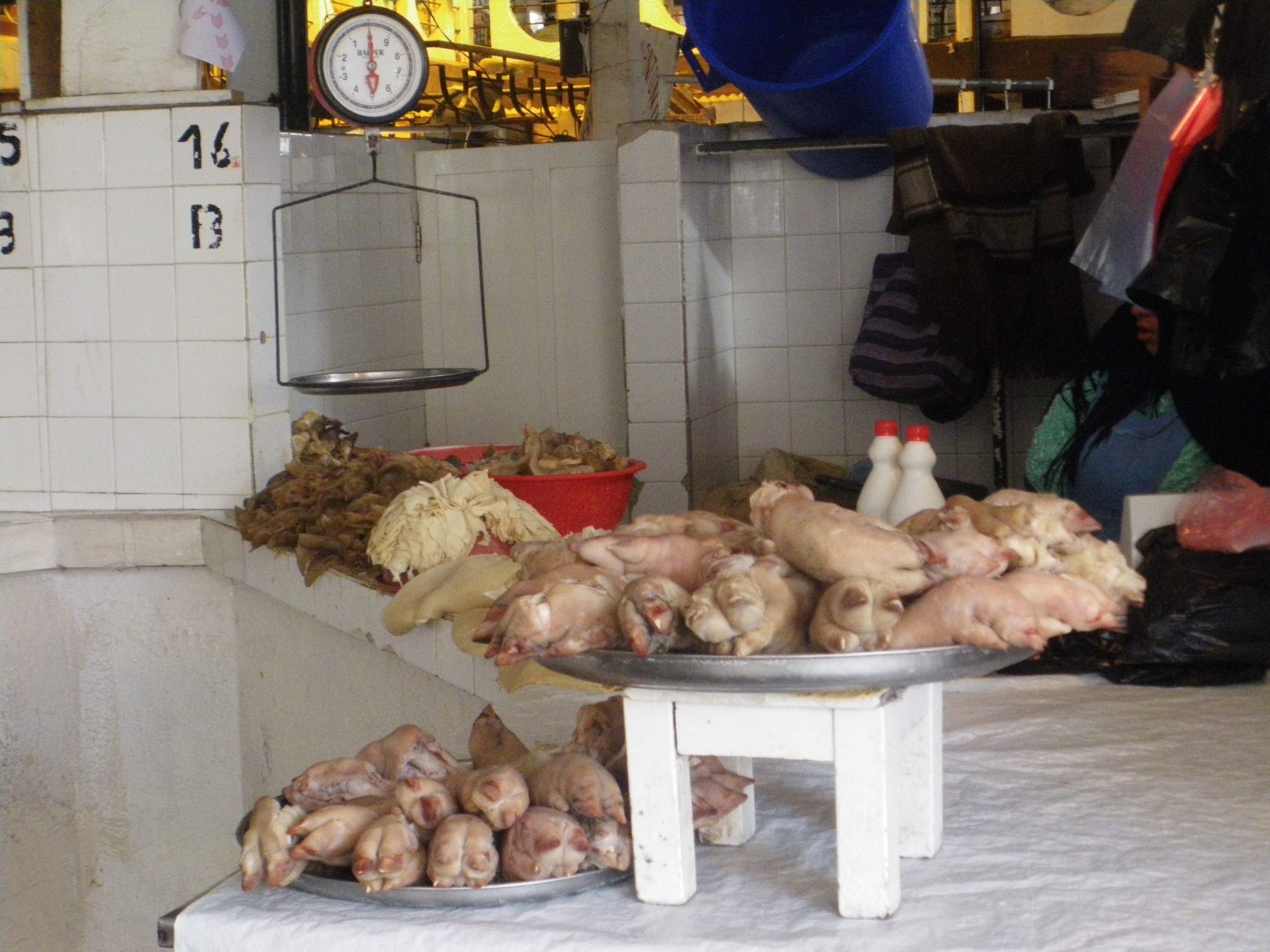
The walls of the one courtyard inside the market building are lined up with small fruit stalls, with women behind them selling smoothies and fruit salads. I ate the best tasting fruit salad of my life at one of these stalls (for about € 0.50). We’ve seen similar fruit salad stalls in La Paz, but they weren’t as good. Highly recommended for anyone visiting Sucre.
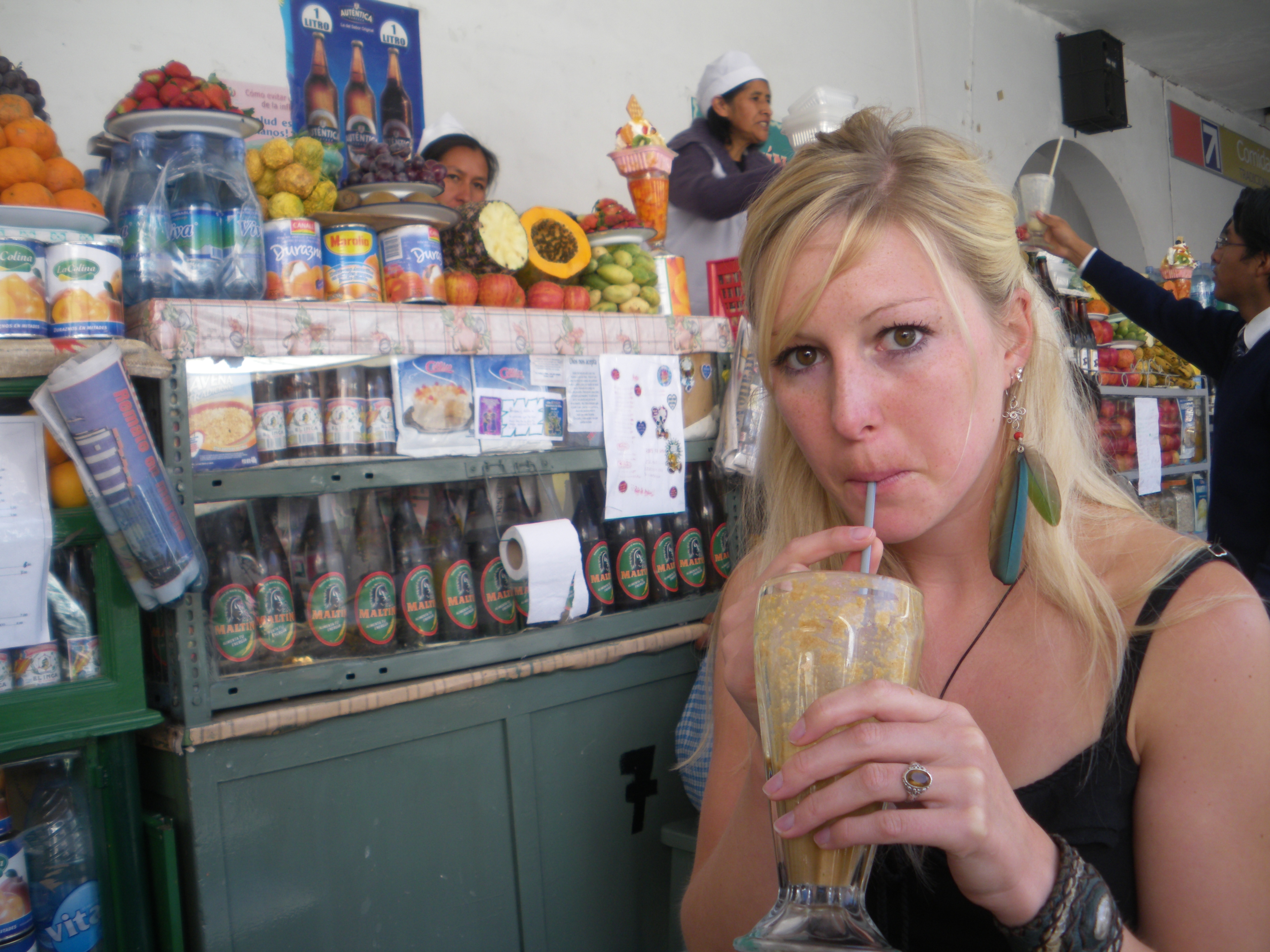
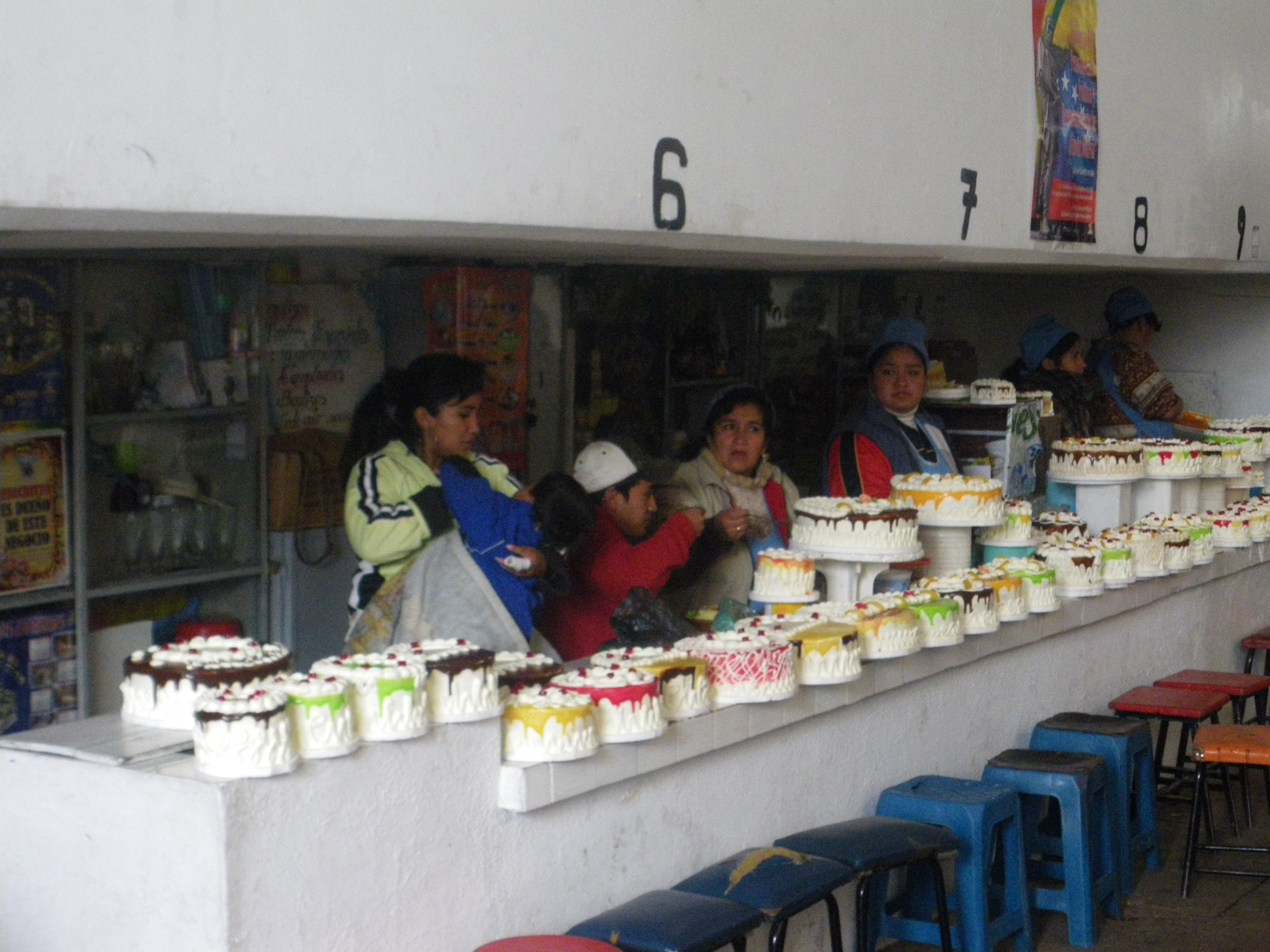
In addition to the local market, there are also turistico markets, selling bags, clothes, jewelry and mementos to the tourists. One of the travelers favourites, is the chompa, the Bolivian equivalent of a jersey or jumper (from where the local name comes), complete with llama patters and often being associated and worn by the Bolivian president Evo Morales, much in the same way that Nelson Mandela wore his colourful shirts. Other loved items are colorful bags and handbags, leather wallets, caps and Incan/Peruvian beanies. Almost every backpacker will buy at least one traditional clothes item, which the older people all still wear, while many youngsters try their best to look urban and “western”.
Another oddity in Sucre (at least for Bolivia), is the businessman wearing the western style suit and tie. This is quite a contrast to the countryside, where the people live a life of subsistance farming with their donkeys, chickens and cows.
4 August, Sucre’s dinosaur tracks
We made a visit to the dinosaur tracks outside of Sucre, home of the largest collection of dinosaur footprints in the world. The footprints were discovered in 1994 by the workers at the cement quarry operating in the area. Up to 5000 prints from about 250 different dinosaurs are embedded in a gigantic, near-vertical slab of limestone rock.
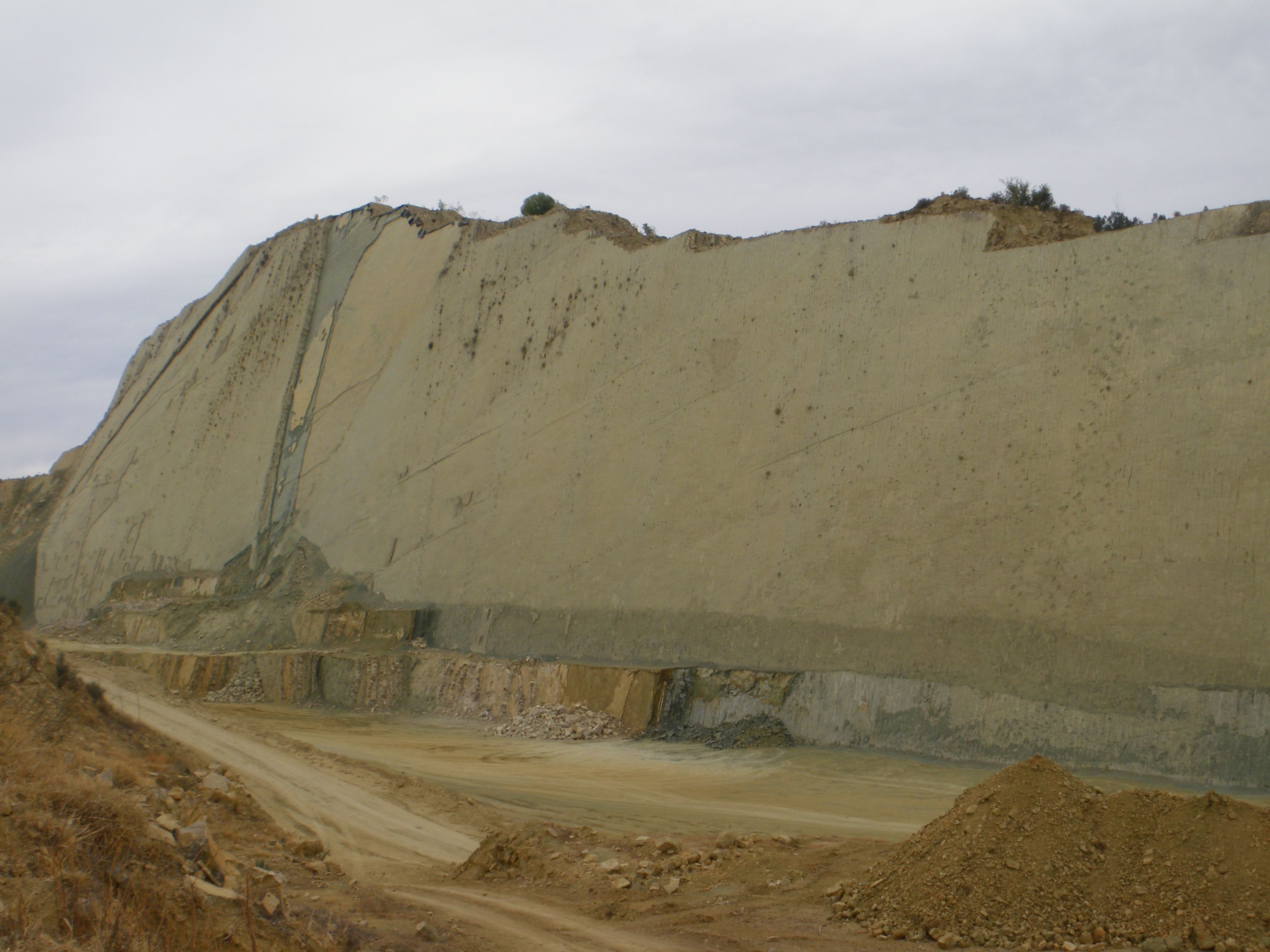
Unfortunately the visit was a major disappointment, even for a former dinosaur nut like me. It seems that the company owning the quarry prevented the construction of a proper dinosaur park or museum. The limestone rock containing the footprints is seperated from the actual museum by a large part of the quarry, including a road carrying its trucks, and this section is off limits to any visitors. The small dinosaur museum is located on a hill about 50 meters away, from where you can squint to try and see the footprints.
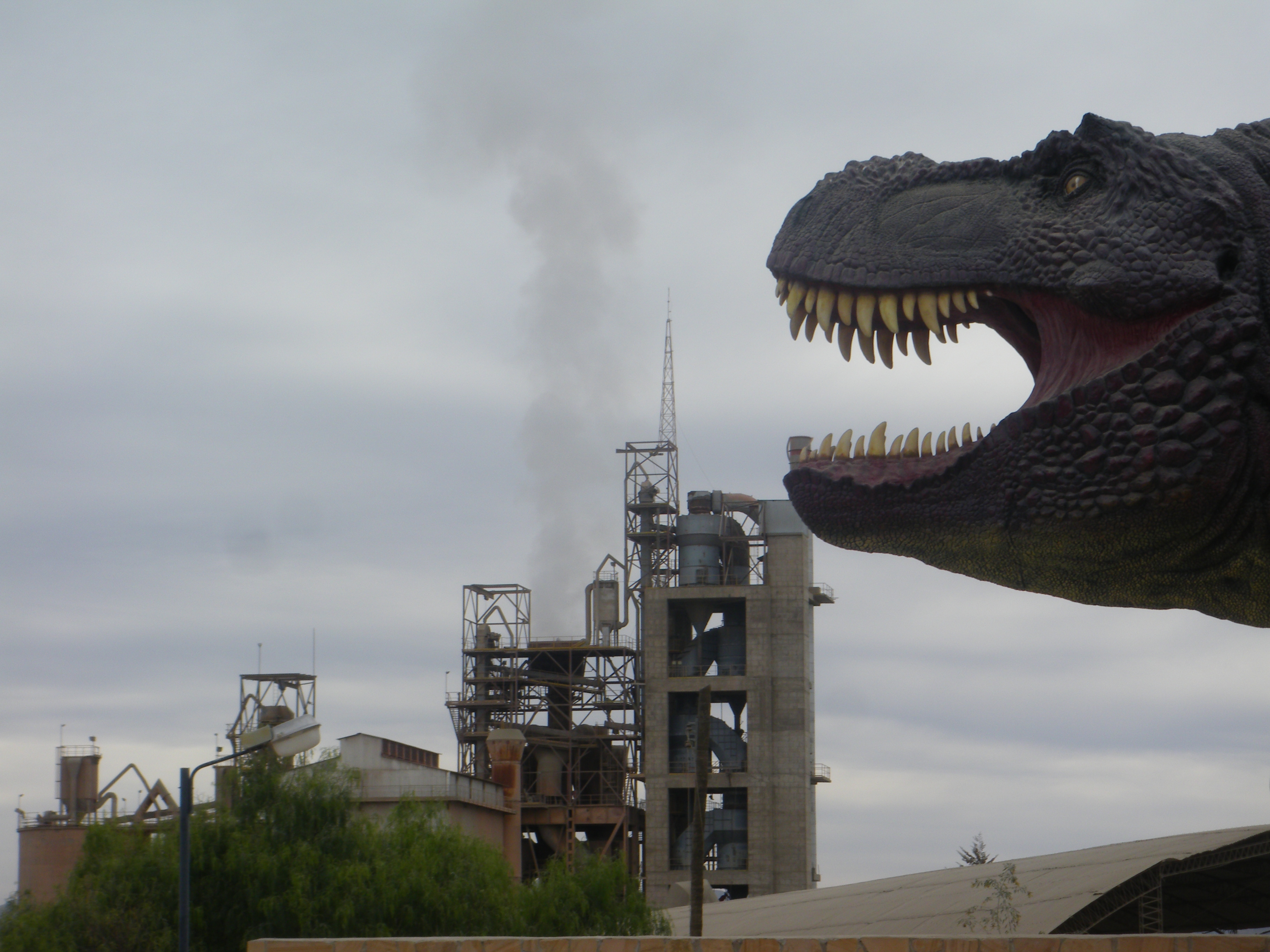
I couldn’t help but wonder whether this was not the result of bribing and corruption which enabled a big business (the cement company) to prevent the establishment of a proper museum (next to the actual footprints) of what is obviously a national archeological treasure. The museum itself looked nice from the outside and it seems as if is was created or funded by people with good intentions, who wanted to create a center for education and the preservation of the prints, but the fact that it was so far removed from the actual site was just depressing. In the end, after hearing from another disappointed Spanish tourist, that the museum itself was not worth the entrance fee, and also out of principle, we decided not to enter.
Tony and I tried to sneak down the hill and closer to the footprints to get a closer view or at least a nicer picture, but we were quickly spotted by the guards and told to leave. Closer to the tracks, we found a small brick building and a sign welcoming visitors to the Dinosaur museum, confirming our suspicions that the original musuem was planned to be closer to the actual prints. Too bad.
5 August, Sucre: My birthday, the mirador and the best steak in a very long time
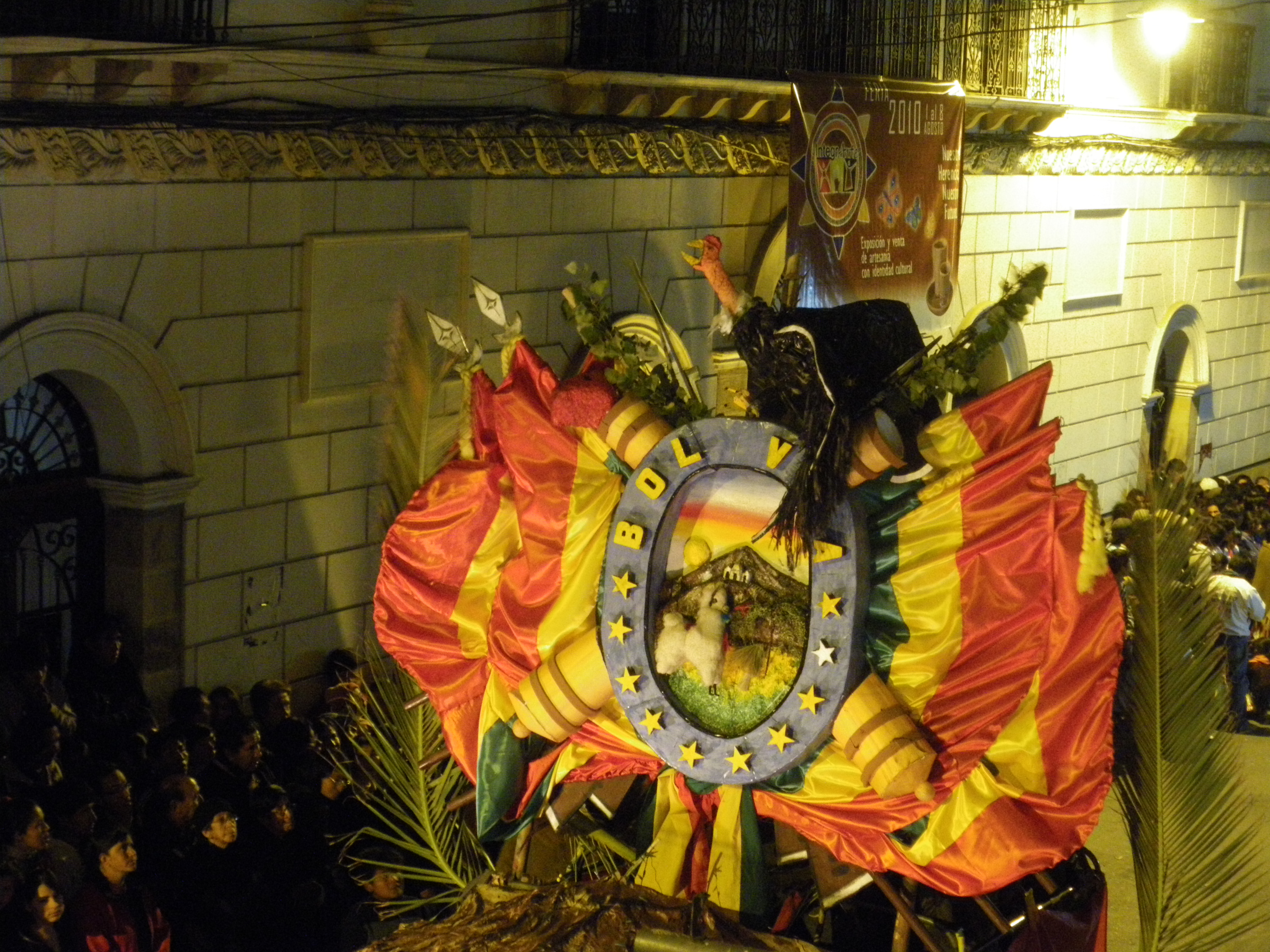
One of the advantages of Sucre, is the high number of good and yet very affordable restuarants in the area. Today was my birthday, and Manuela and I went with Tony and Sofia to a café up a hill where one could have a view of the whole city. Tony and I bought some coca leaves at the market the previous day, and we were munching on balls of leaves pressed into our cheeks as we walked up the hill. After about an hour of having the leaves in your mouth, you should add a catalyst (either plant ash or bicarbonate soda) and then put the ball back into your mouth. The end effect is a mild stimulant, like a strong cup of coffee, but not much more.
Afterwards we went to a French restaurant near the city center. We drank a bottle of Aranjuez red wine and decided to eat potatoes with caviar and the steak with red wine and mushroom sauce. This turned out to be the absolute culinary highlight of our time in Bolivia, and the best steak in ages, all for less than €5 per person.
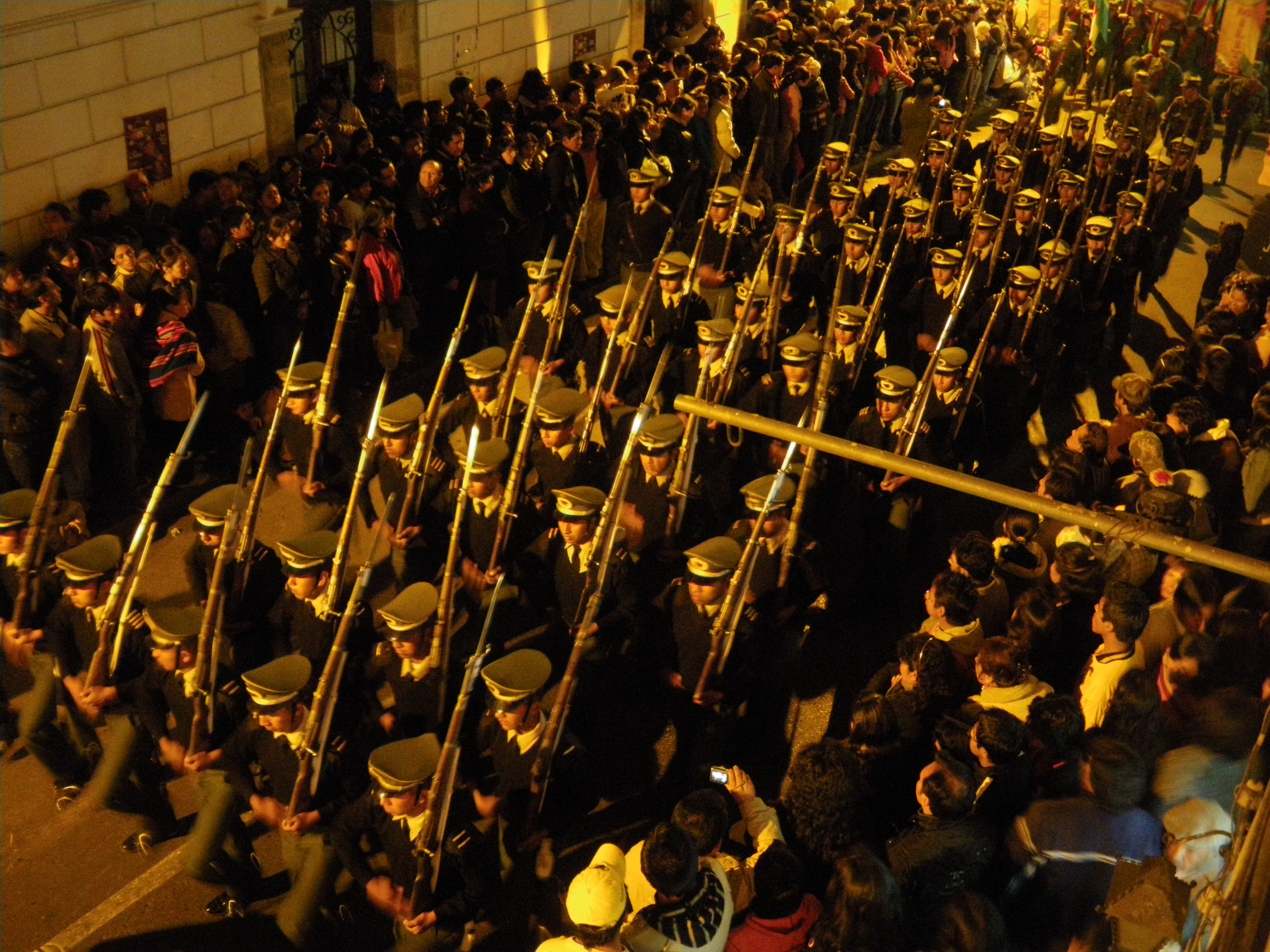
Bolivia’s anniversary of independence is on the 6th of August (circa 1825), and on the night of the 5th, there was a large military parade right under the balcony from where we were sitting. It was a very nice coincidence (Glücksfall), and we felt fortunate to be able to witness it from above, since the streets were incredibly crowded. The parade was quite militaristic, something which none of us has ever really witnessed. An impressive variety of military units with different outfits and weapons marched past our balcony, including a group of paramilitaries who rode on jeeps wearing full camouflage, while pointing semi-automatic machine guns at the spectators. Quite a spectacle from above.
7 August, Sucre: Going out to Florin
After having had a fun night of food and drink 3 nights before at Florin, a dutch owned bar and restaurant, we decided to go back for seconds. Coincidentally a pop band from La Paz named Dr. Jet was playing that night and we were entertained with covers of Spanish pop songs as well as Lady Gaga, Shaquira, Robbie Williams and others.
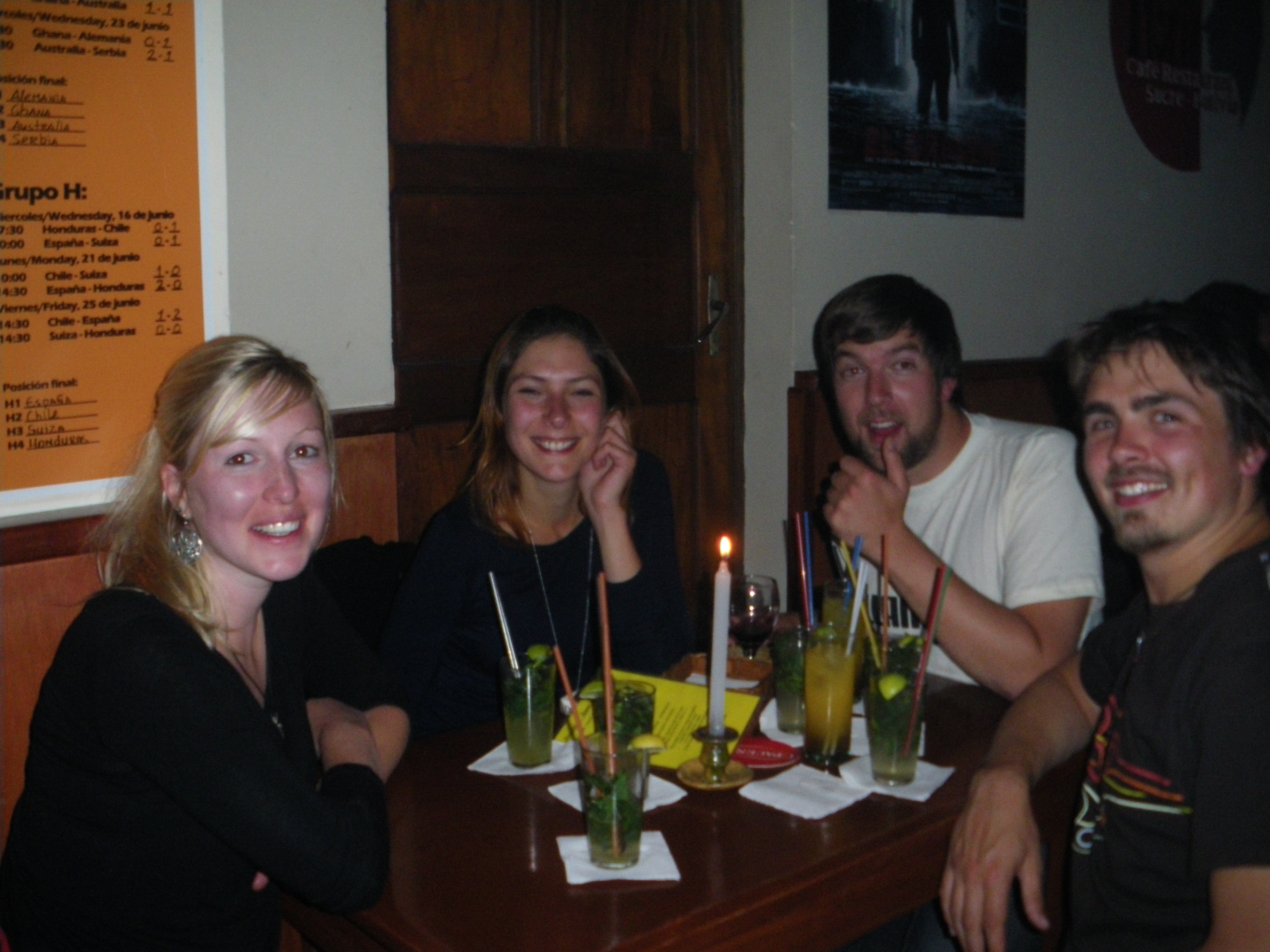
It was interesting to see that not a single person there was wearing any traditional peace of clothing or even jewelry. Everyone was dressed completely western, with one guy making sure that his Hilfiger jersey was draped over his shoulder exactly right to allow one to see the label. Just as the preppies do in the business school in Mannheim Germany and probably all over the world.
Sucre in general was a culinary pleasure especially considerung the prices. It’s also the chocolate capital of Bolivia and we more than once went to a local cafe where we drank hot chocolate and ate chocolate covered fruit, for about € 2,50 in total. In the end, we stayed much longer in the city than we expected, as we were hoping for the road to Potosi to clear. It was being barricaded and blocked for weeks by unhappy protestors, trapping panicky tourists inside the city of Potosi and preventing anyone else from going in. In the end the situation took too long to normalise and we decided to continue onwards to La Paz.
10 August Arriving in La Paz
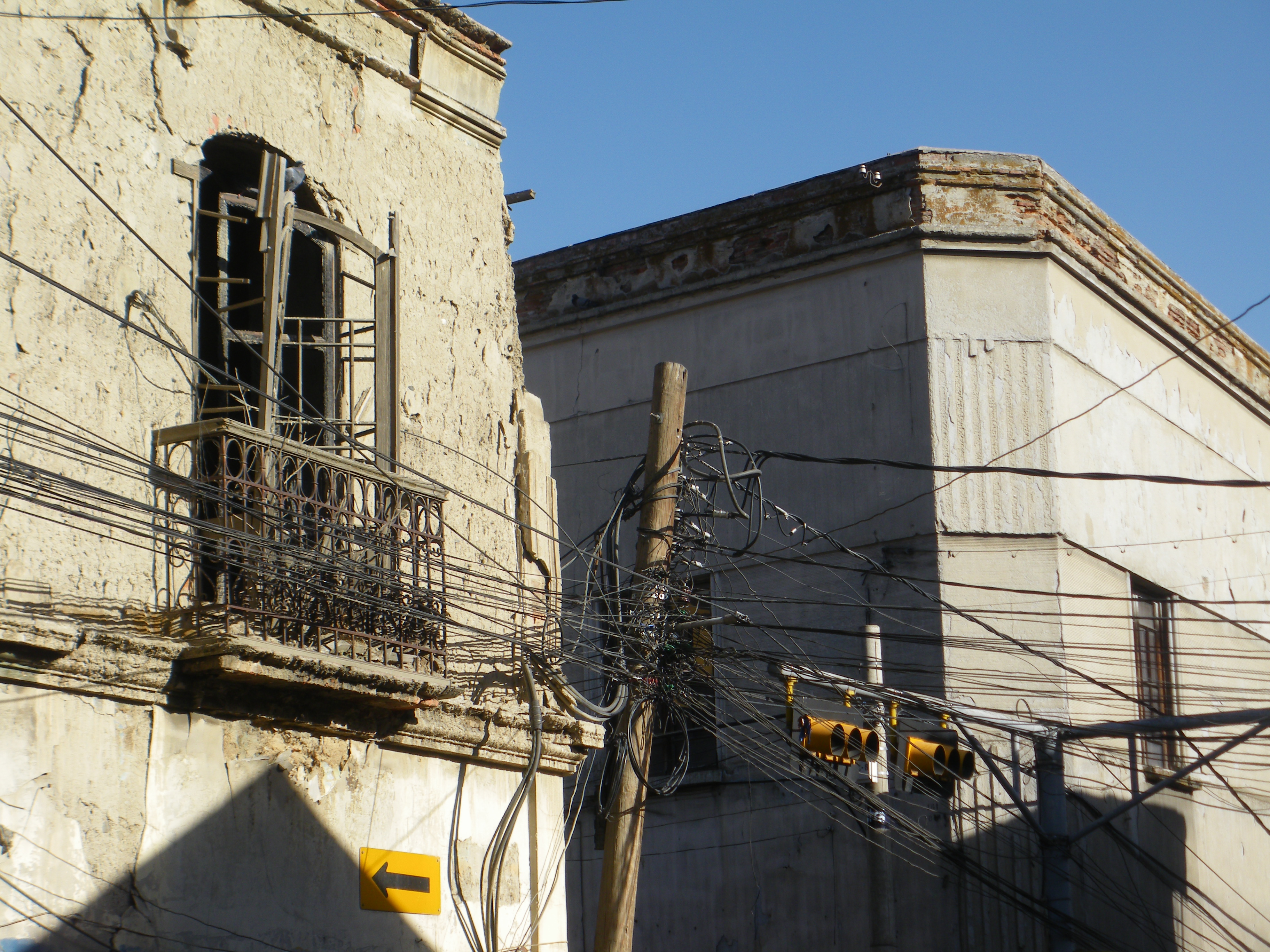
The overnight bus ride to La Paz was quite terrible and nerve-racking. Just the day before we read news of 72 people that died (and 196 injured!) only in the month of February 2010 in bus accidents in Bolivia, and now we were sitting in such a bus, speeding along the side of a mountain, with a steep drop off at the one side. Loud Peruvian/Bolivian music blared through the shitty bus speakers, creating more distortion than anything melodic, while we tried to enjoy the cultural experience and not imagine rolling down to our deaths in the valley below.
The bus trip was again overnight and upon arriving in La Paz and checking into our hostel, we decided to make use of the rest of the day by walking to the nearest lookout point Mirador Killi Killi.
La Paz is really high, the highest capital (administrative) city in the world, and we quickly ran out of breath every time we walked up a hill.
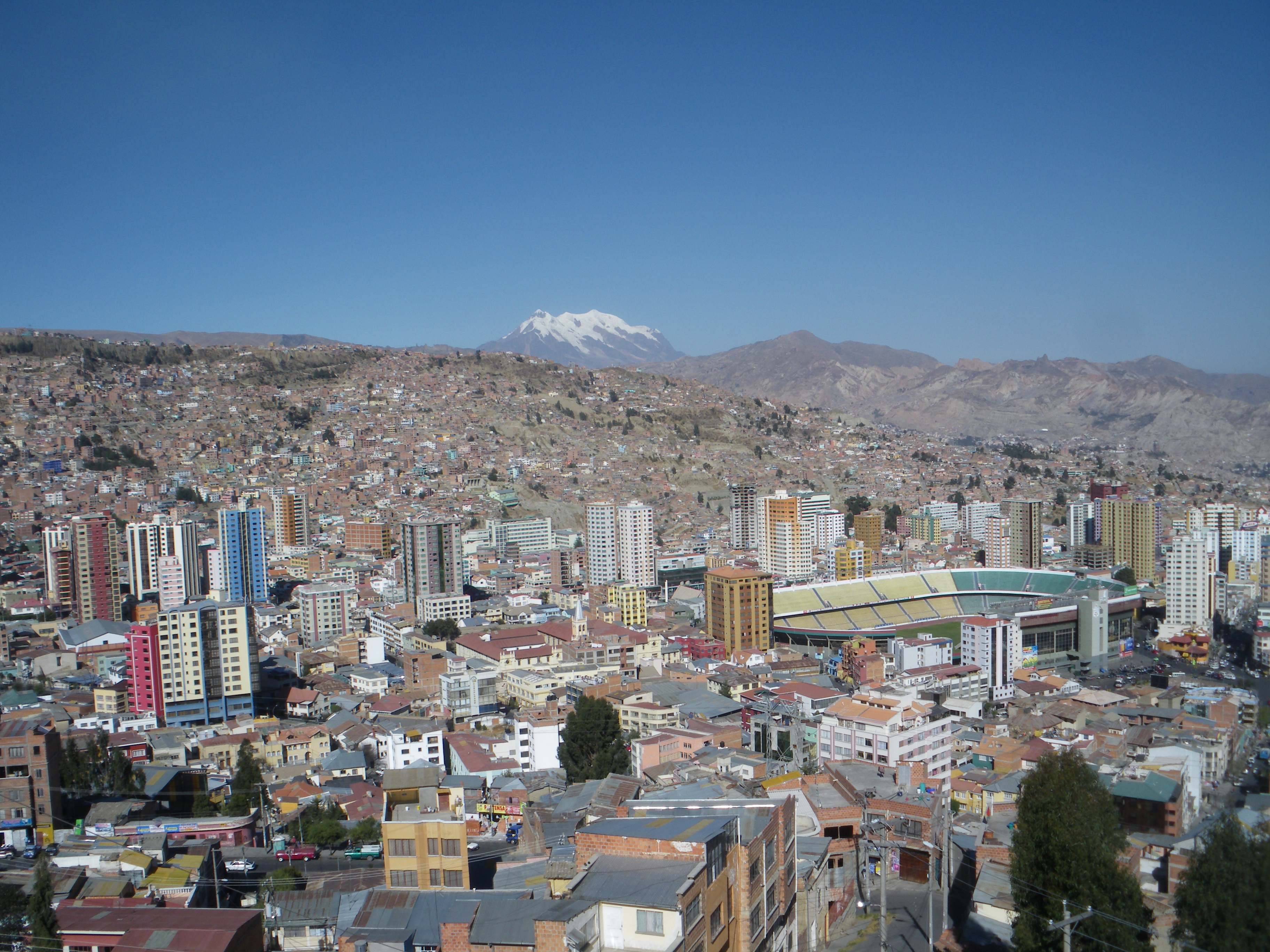
11 August, La Paz’s witches market
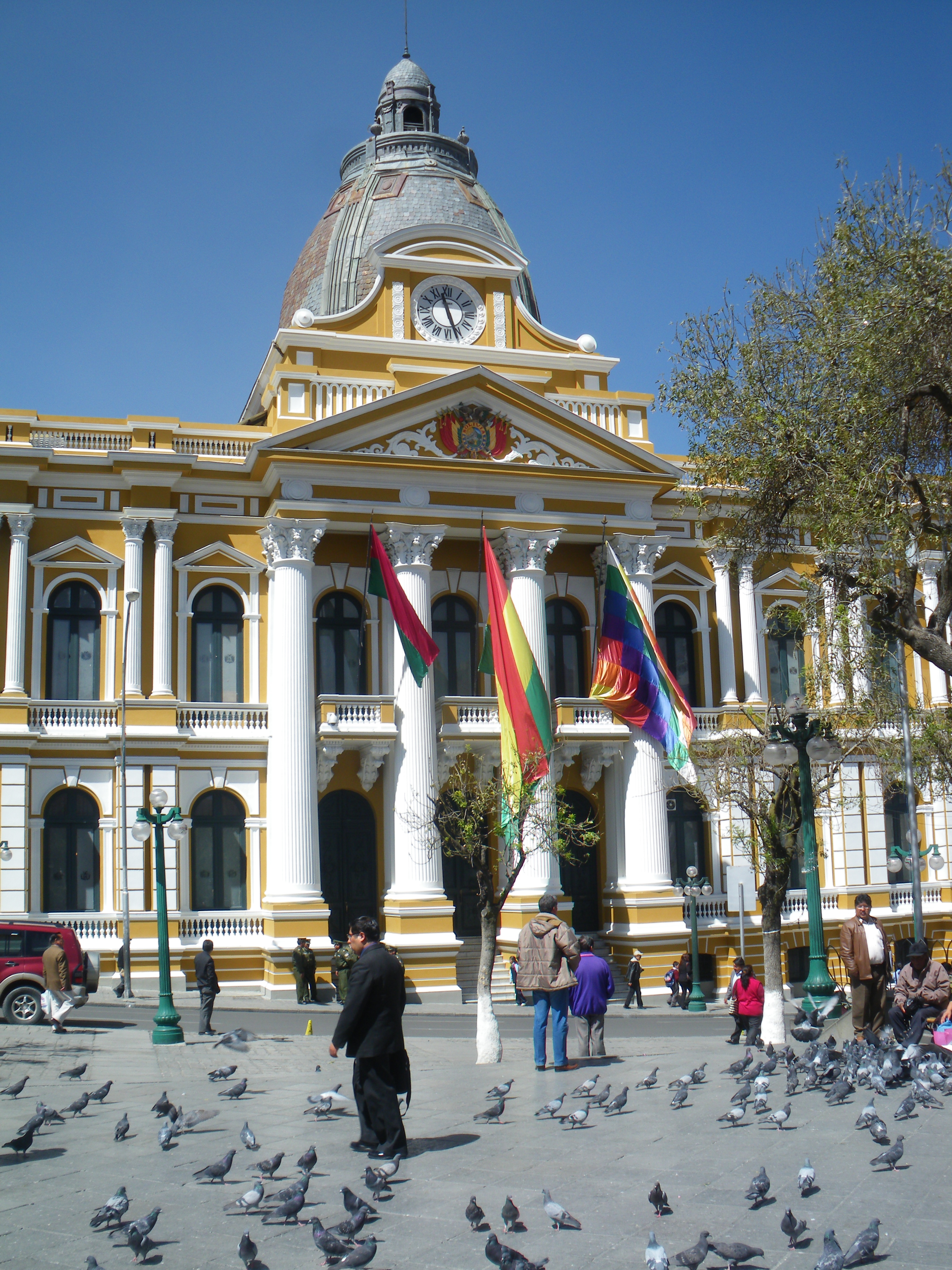
We went to the Plaza de Armas in the city center on our way to the famous Witches’ market. The main square is again quite pretty, surrounded by colonial buildings and well policed. One of the buildings still contains bullet holes from a gun fight between the police and army some years ago. The square is full of pidgeons and local women sell seeds to feed them, which was popular among both the locals and the gringos.
We continued further, past a few more markets before eventually reaching the wiches’ market. This is probably the most touristic area of La Paz, but still fascinating. In between the numerous touristicos stalls, there were witches’ stalls, selling all kinds of plants, potions, offerings, totems and even dried up baby llamas or llama fetuses, dried frogs and dead Armadillos.
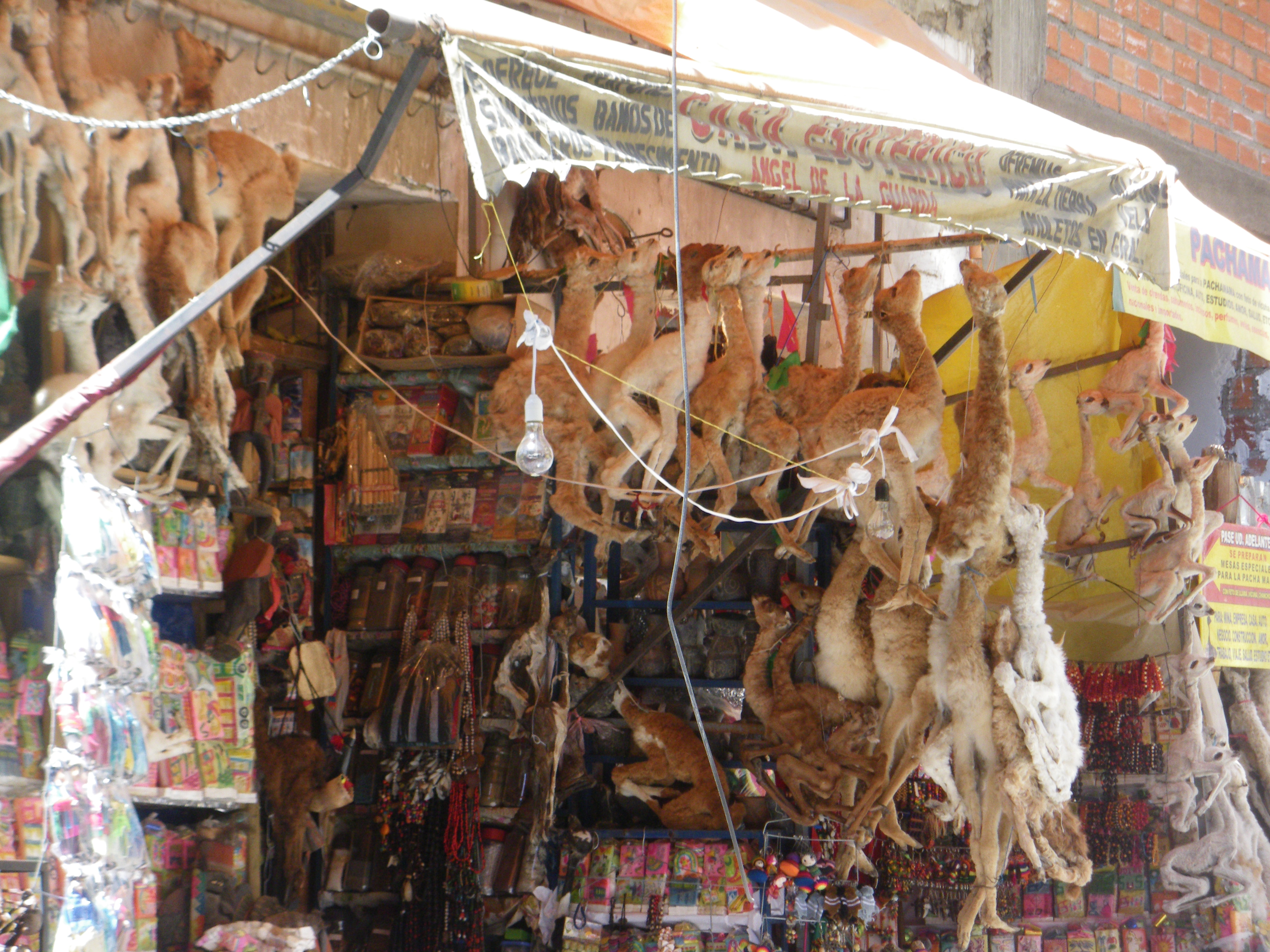
Referring to these people as witches is in my opinion quite misleading and also unfortunate, because aside from the “magic potions” which are all bullshit and imported from the east anyway, these people were just selling the traditional gifts (such as the baby llamas) to be offered to Pachamama, the earth goddess. To refer to them as witches is to impose (often negative) western stereotypes onto their traditional customs and practices. Many native Americans in Bolivia and Peru still adhere to their traditional and native customs and practices, which include making burnt offerings to Pachamama.
13 August, Mountain biking on the death road
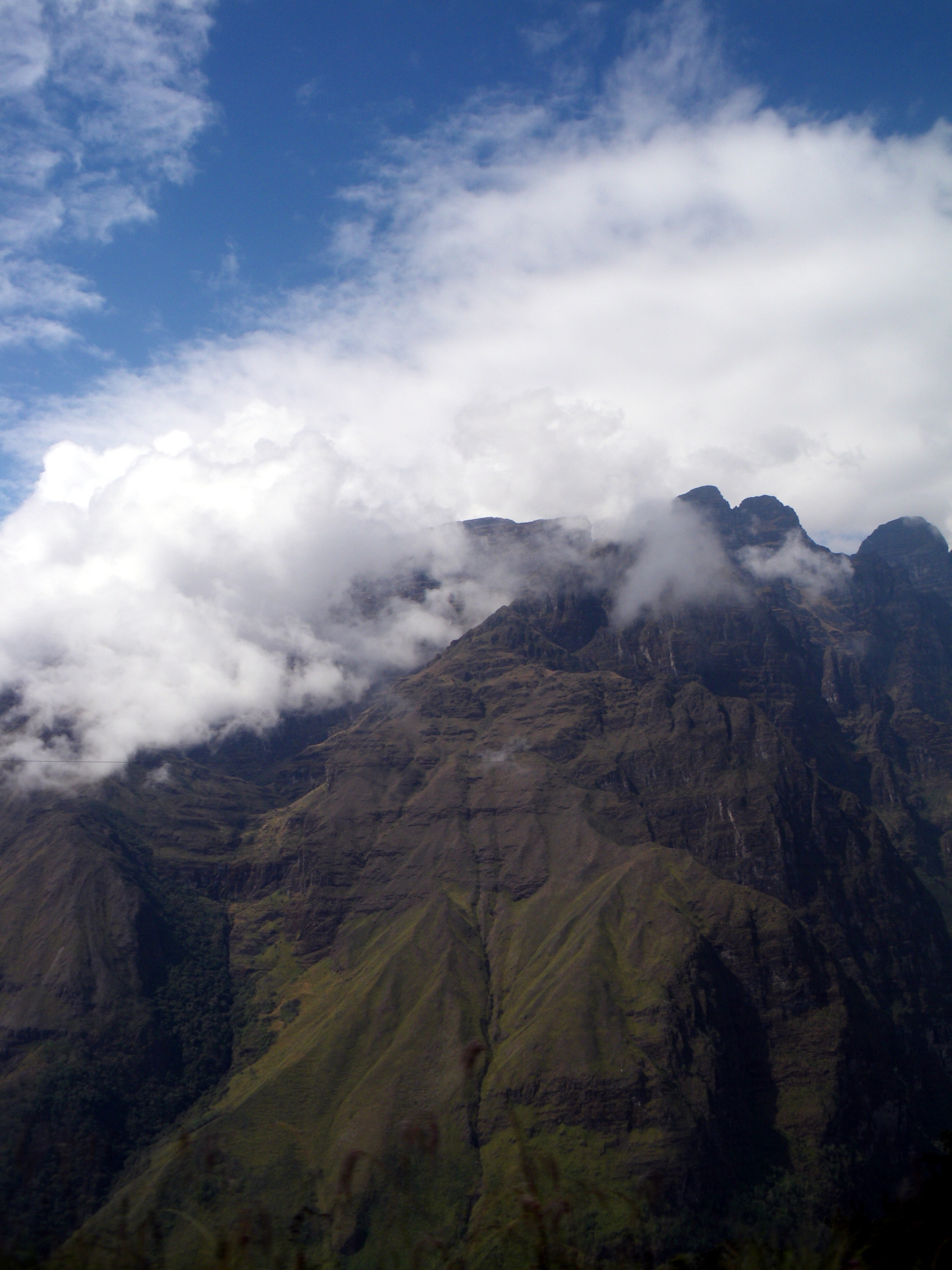
Mountain biking on the death road, outside of La Paz, is one of the main tourist attractions in the area. It’s called the “death road”, or “the worlds most dangerous road” because of the alarming amount of fatal car accidents that have occured there over the years, and not because of the amount of mountain biking accidents, although some tourists have also died. The road is dangerous, because it is only wide enough for one vehicle at a time, slopes downwards from a height of 4700m to 1200m and is flanked by the side of a mountain one the one side, and a steep drop into the canyon below on the other side.
What few people seem to mention however, is that the death road is also beautiful. It is inside a cloud forest and the surrounding landscape and vegetation is simply stunning.
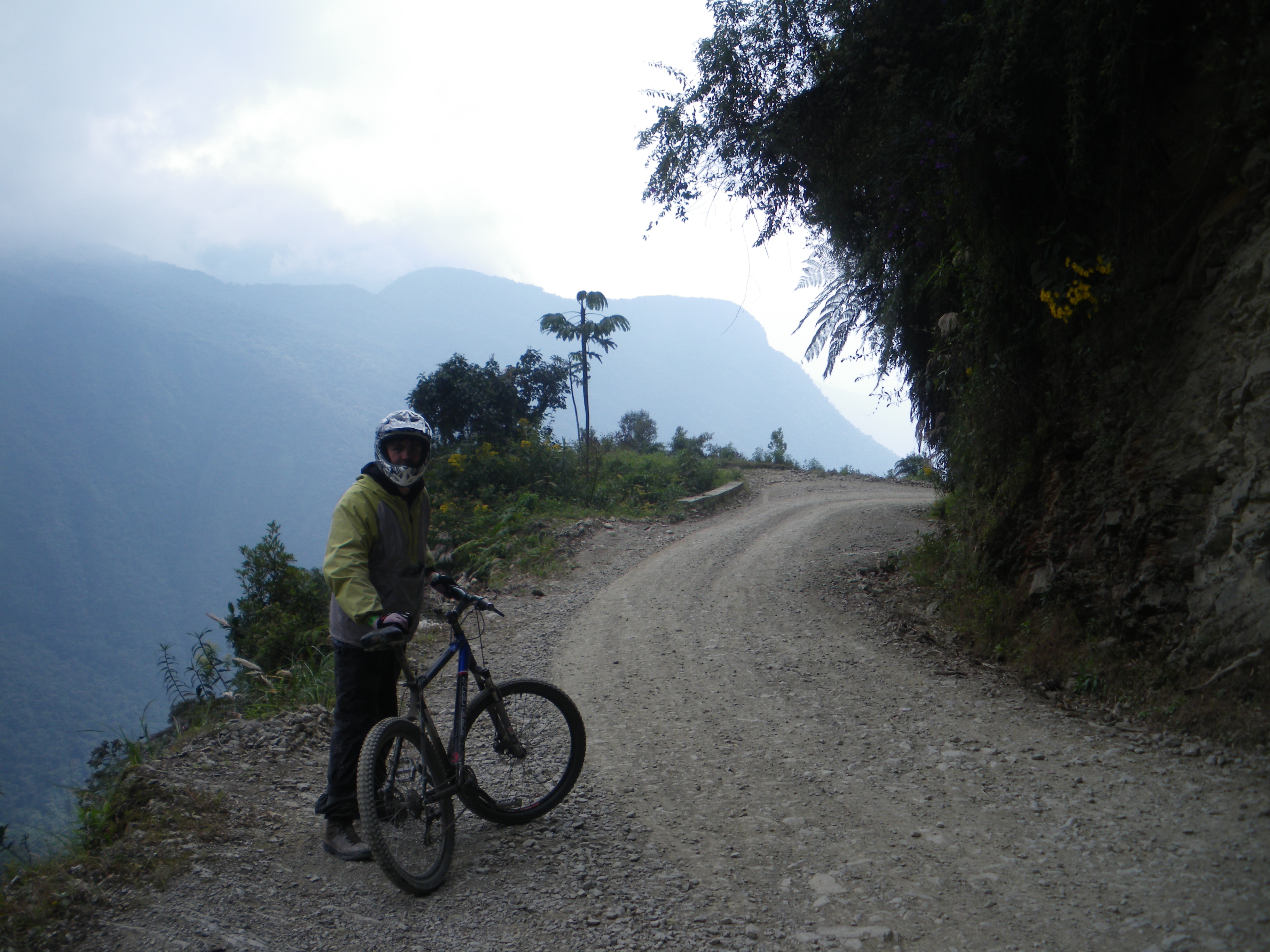
The cloudforest seems to be one of nature’s most psychedelic places. White mists from the clouds fill the air, as if from a giant smoke machine, while new fractal shaped fern leaves uncoil and unfold according to a genetic blueprint that is hundreds of millions of years old. Now and then you find colourful flowers; pink, purple, orange and red, some big and shaped like a Jester’s hat and others small, hanging like brightly coloured clocks. Between them fly colourful butterflies. Bright spots in a canopy of a million different shades of green. All the rocks and fallen branches are covered in moss and vines twist and turn around the trees and bushes. Streams flow in the cracks and ravines, sometimes falling dozens of meters over the edge of a cliff, down to a pool below. The whole place seems to breathe; alive, vibrant and blessed with the abundance of water.
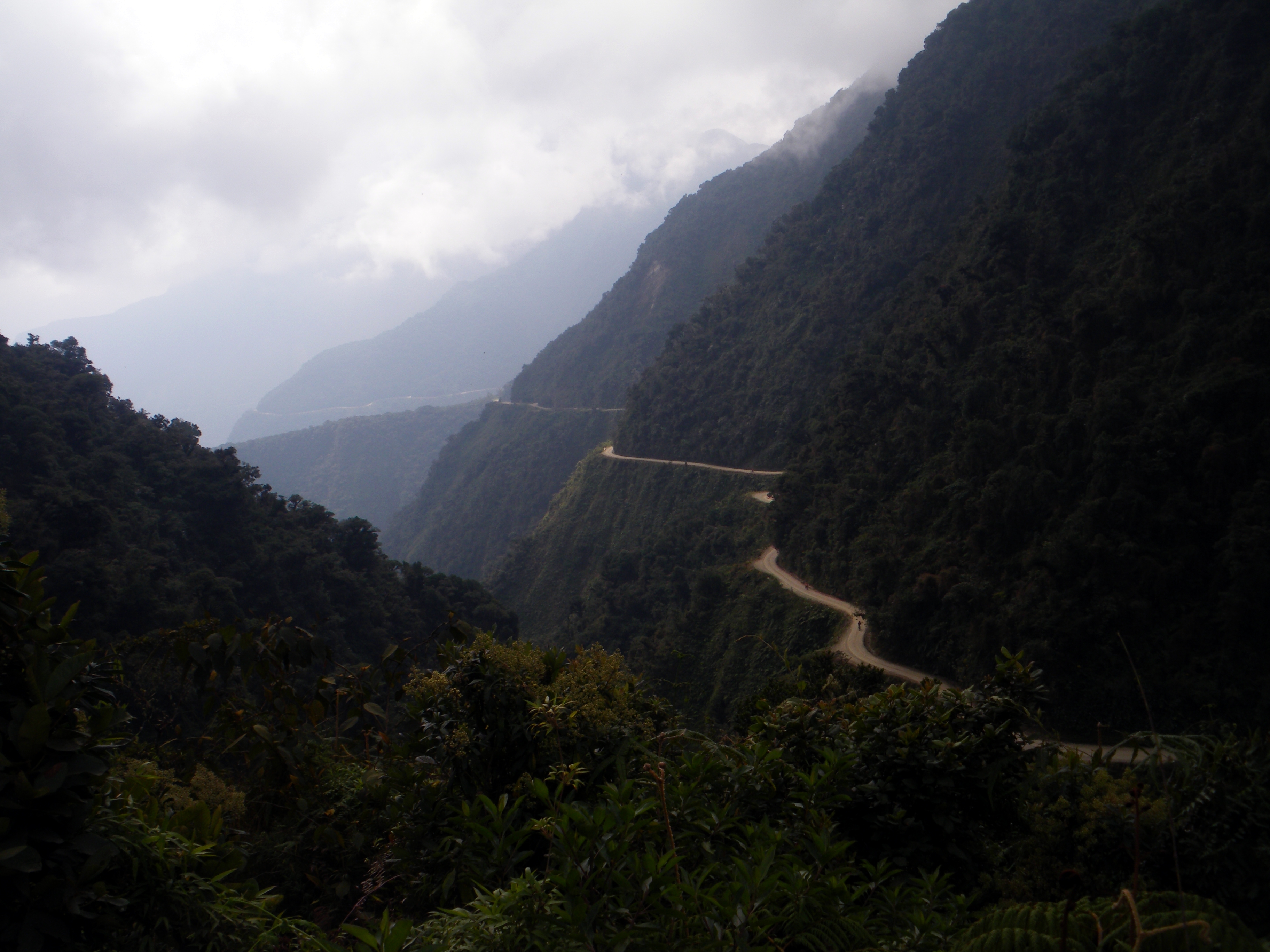
Biking the death road was an incredible thrill and well worth the price. We started early the morning at the top of the mountain La Cumbre at 4700m. So high, that it was icy cold and actually snowing. The first part was on a tarred road, still being used by cars and trucks (as opposed to the actual death road which has a newer tarred replacement). After a while we reached the actual death road (a gravel road) and the beginning of the cloud forest. From here on, it was still another 63km and 3500m down to the vally below. An unforgettable combination of adrenalin sport and nature.
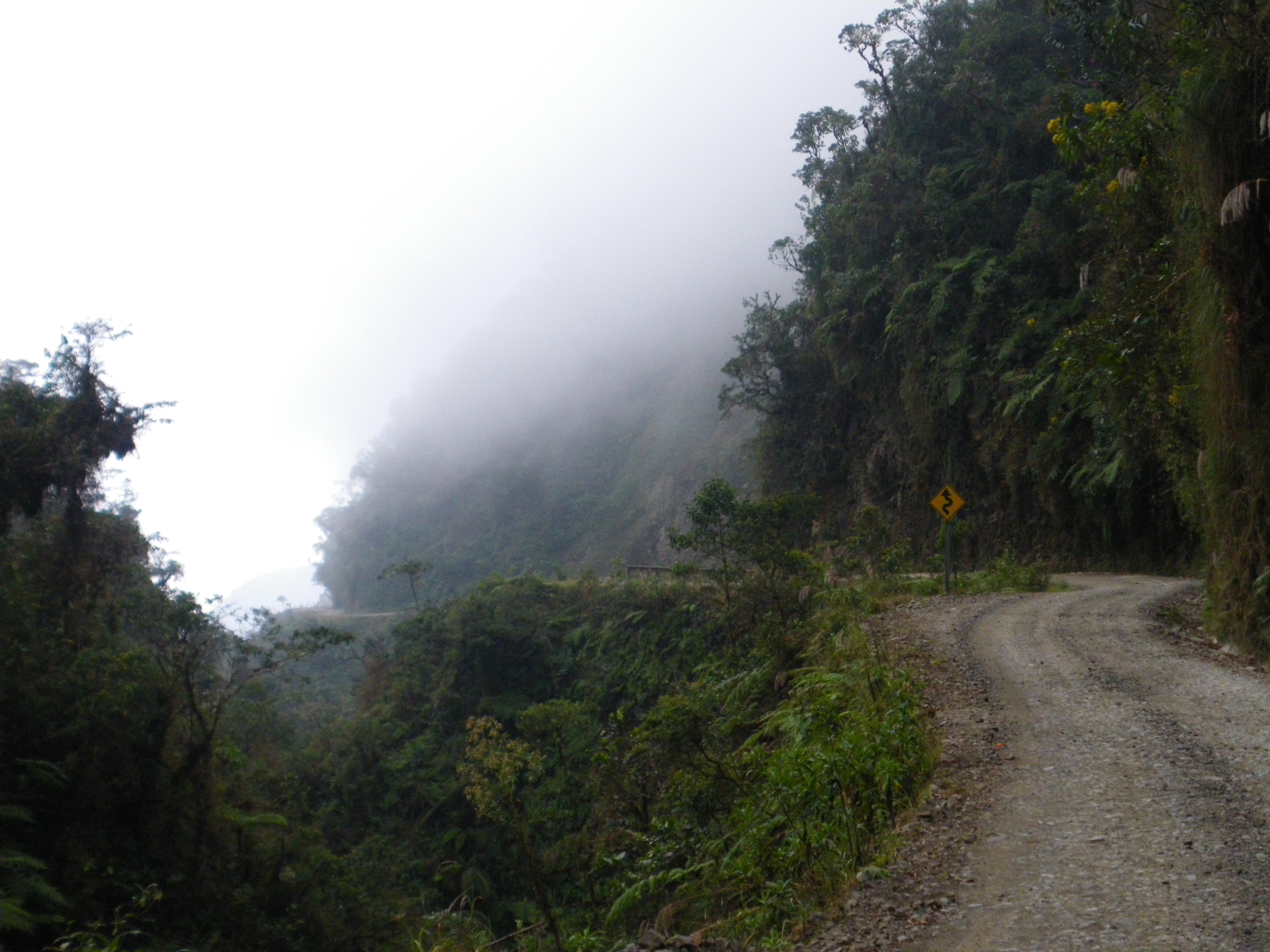
15 August, Last day in La Paz and traveling to Copacabana
After a few days in La Paz, we left for our final Bolivian destination. The town of Copacabana on the coast of Lake Titicaca.
On our final day in La Paz, we shared some impressions of this fascinating city and we remarked on how amateur things in Bolivia sometimes appear. In some areas of La Paz, the billboards are actually the prettiest things in view. Sometimes, we would go to a restaurant, and it would feel as if you were the first customers they have ever had.
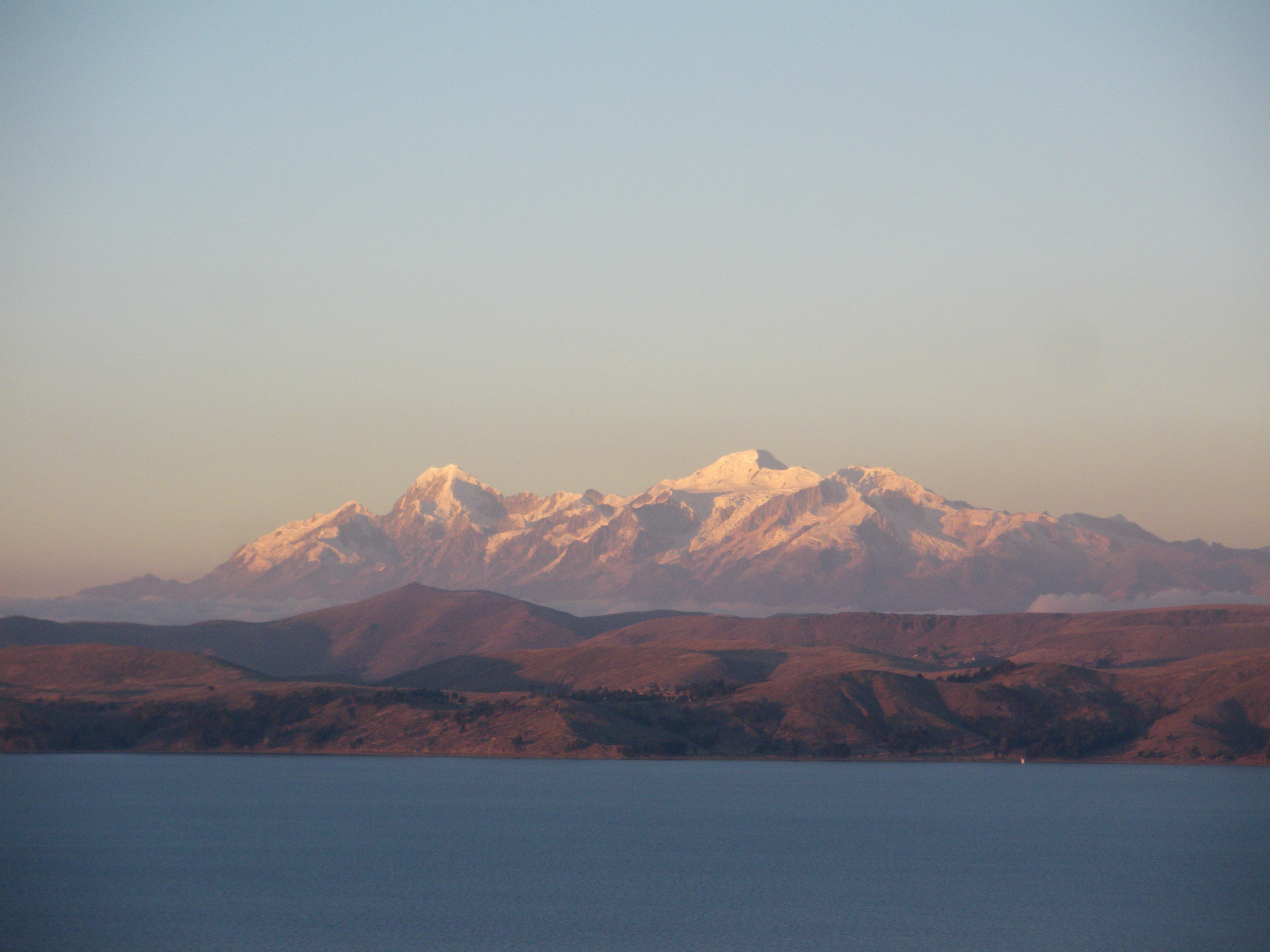
Upon our arrival in Copacabana, we went to such a restaurant. We wanted to leave, feeling that it might be a mistake to eat at this particular restaurant, seeing that they had no other customers yet, horrible decoration, a dirty table cloth, and a strange menu, but the whole family of about three generations were looking at us excitedly (at least by Bolivian standards, which is with almost no expression at all), so that we felt compelled to stay and stimulate the local economy. Big mistake. We ordered a bottle of Kohlberg red wine, which by had now secured its place as the best value for money in Bolivia, but this time for more than double the retail price. Ten seconds later the mom and her small daughter ran out of the restaurant and Manuela makes a bet with me that they are going out to buy the Kohlberg. Sure as hell, a while later she returns with a bottle shaped object hidden beneath her poncho.
We also ordered two trouts, one with butter and one with tomato, known to be one of the local specialities. After a while the trouts arrive, both looking identical. Fried in fat, lying on a handful of chips, with a bit of dry rice on the side. The only difference is that my trout is completely covered in Ketchup while Manuela has some butter (or perhaps margerine) smeared over hers. Depressed at being fleeced with our shitty trouts and (expensive) cheap bottle of wine, we ate without much conversation, although we occasionally made jokes and laughed at the situation.
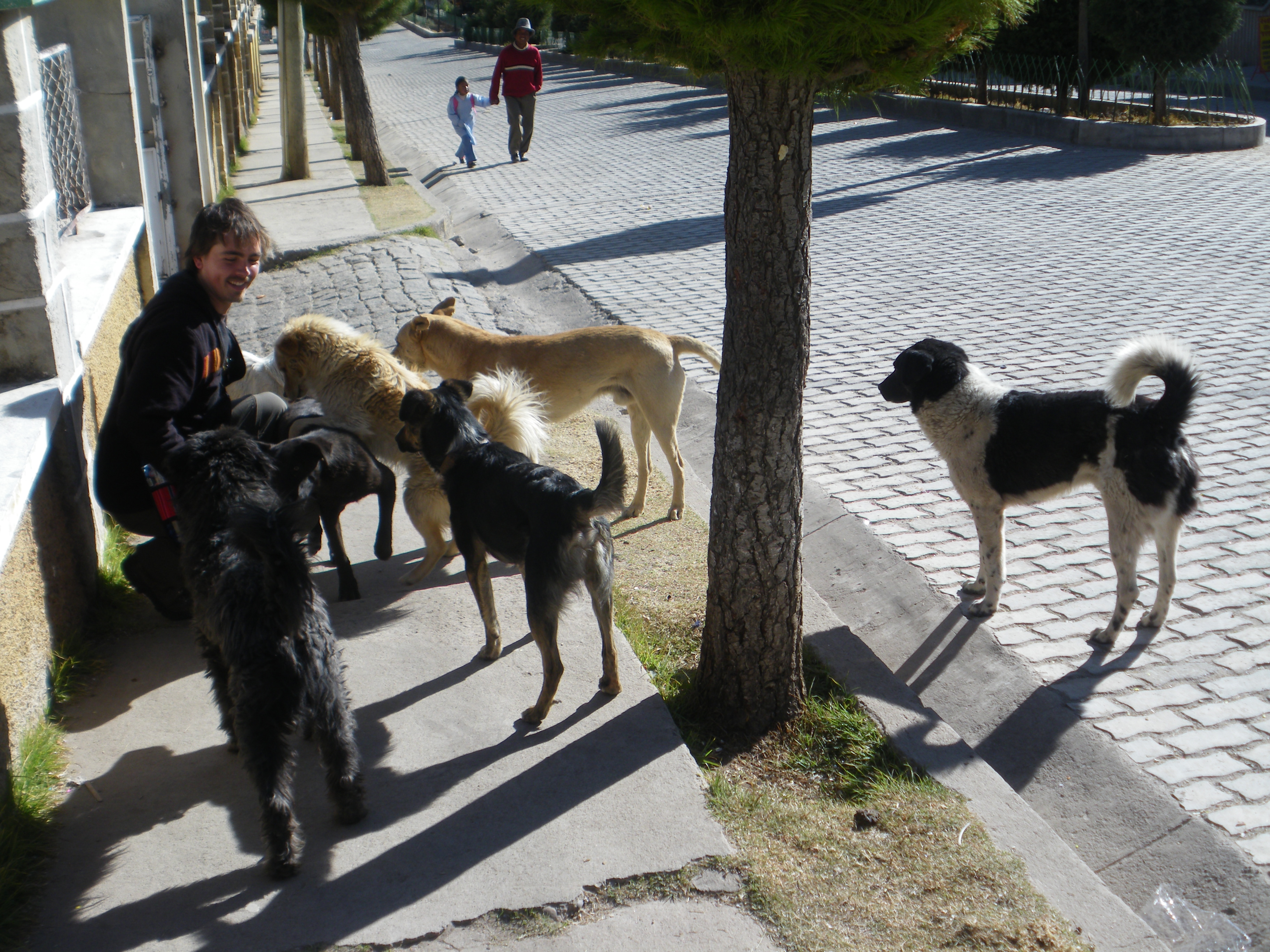
It’s remarkable how many Bolivians try to use tourism as a means for creating better lives for themselves and how hard they sometimes have to work for it. Once we were in a restaurant, run by a married couple who worked from the morning to the night, while their small child played behind the counter. The mother makes all the food and the father takes the orders. Later, we would go to a restaurant run entirely by a single woman. She would take the orders, cook the food and serve it, for seven tables! We were glad to support these hardworking local people, and were therefore also prepared to sometimes lower our standards a little.
16 Copacabana

In Copacabana we visited the local cathedral with its famous Virginita of Copacabana, a statue (almost doll) of the holy mother Mary, created by a relative of the famous Inca king Atahualpa. The Incas worshipped mother earth through the goddess Pachamama, and this practice was later synthesised with the Catholic veneration of Maria, as introduced by the Spanish.
Copacabana is surrounded by three hills, and we wanted to climb up one of them to see the nice view. As it happened, this hill was also a type of pilgrimage, with a place for burnt offerings at the top. Along the path to the top, there were stone monuments, with scenes from Jesus’ capture, lashings and crucifixion, culminating in the final scenes of his death and resurrection at the top of the hill. Midway up towards the top of the hill, a shaman was holding a ceremony for a young couple, burning their offerings of candy, fake money and other paraphernelia on an altar.
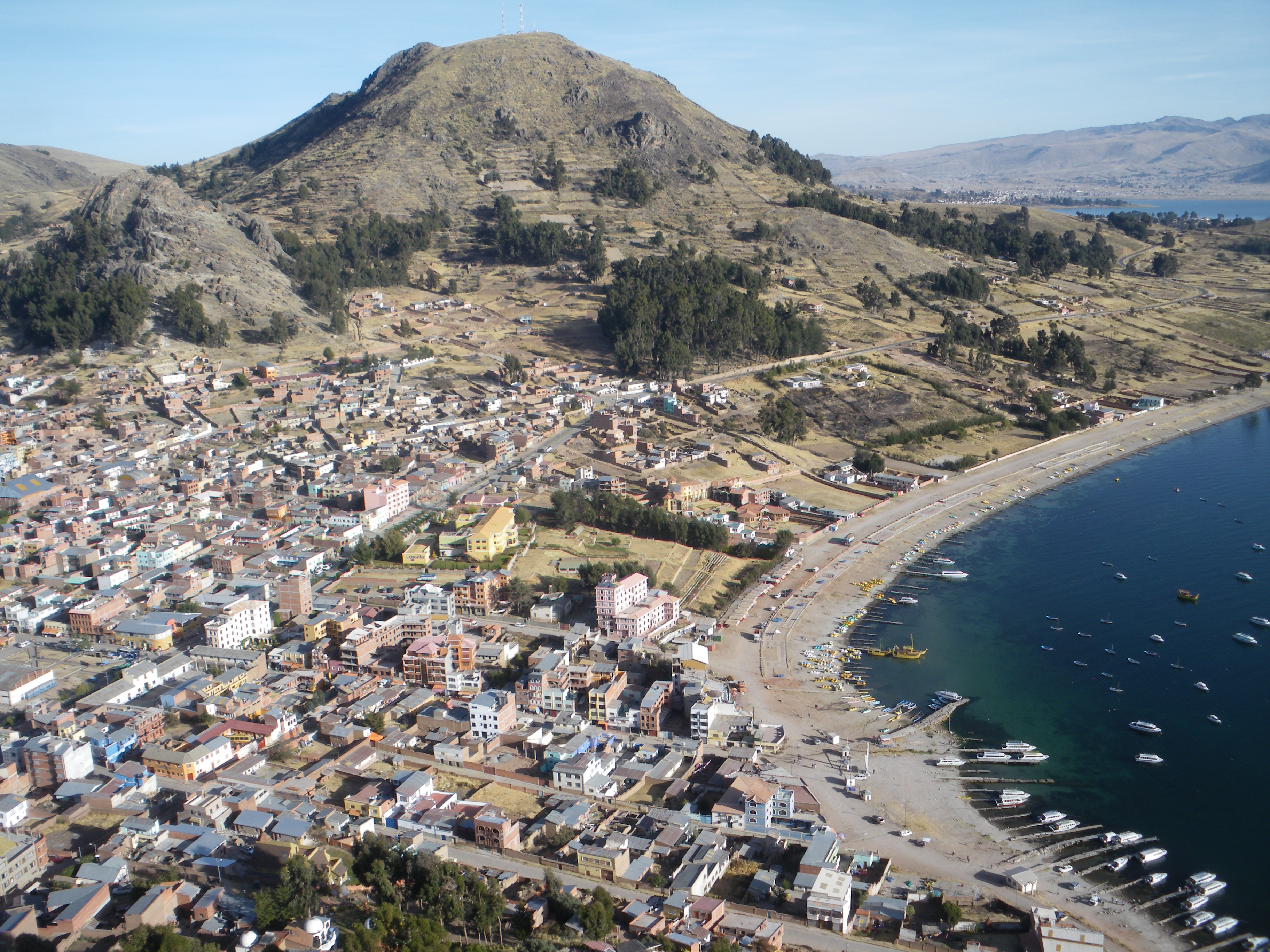
We took a breather and went to the edge to look out at the sun over lake Titicaca ahead of us. Just then, an old man walks past us, pulls out his wiener and pisses right in front of Manuela and I. We took the (not so) subtle hint, and left the area to continue upwards.
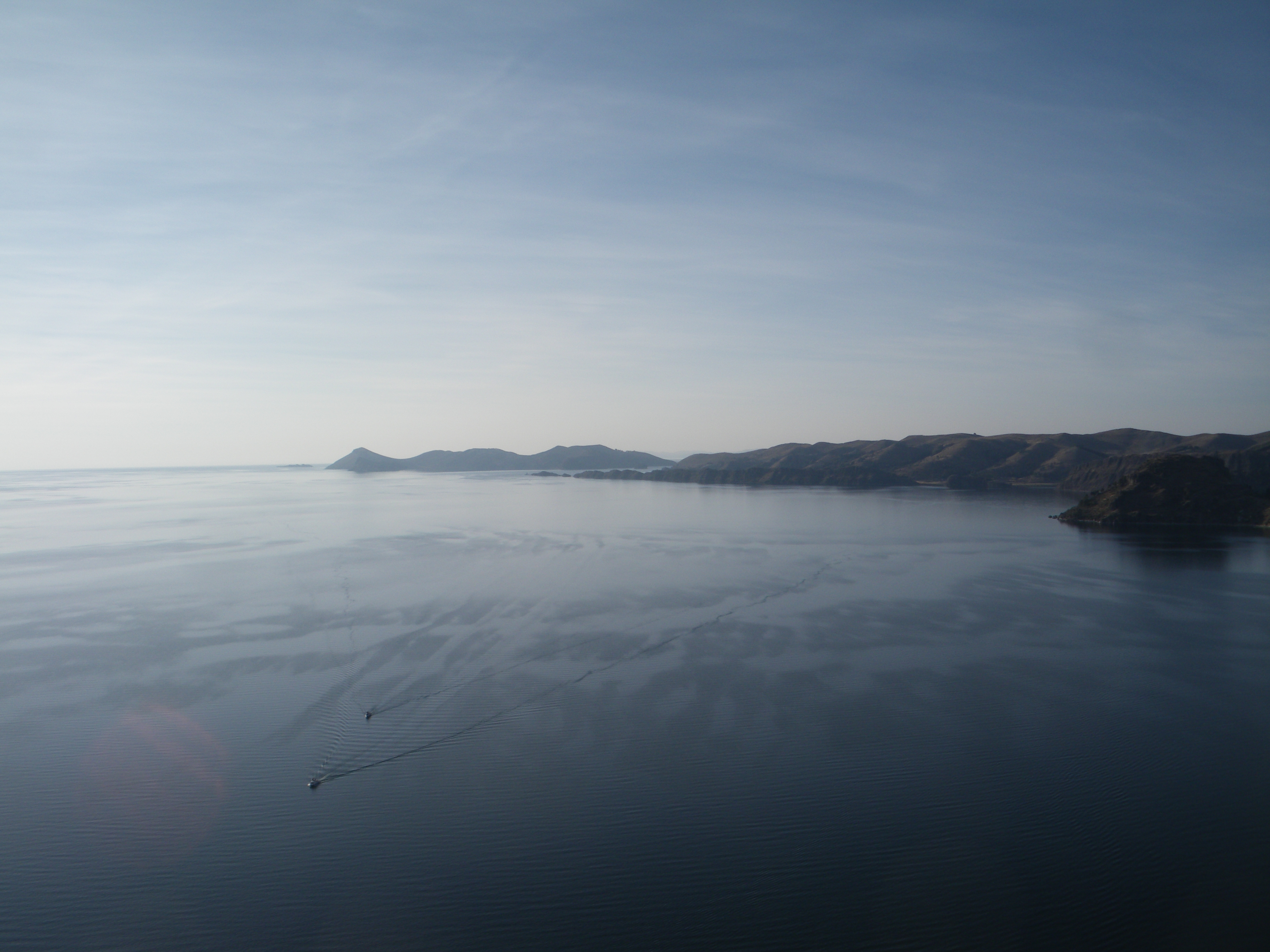
Walking up the hill, I remarked that this must be the dirtyist, most littered hill I have ever climbed. Paper, plastic, beer bottles and everything in between was scattered along the whole way, making the experience much less pleasant.
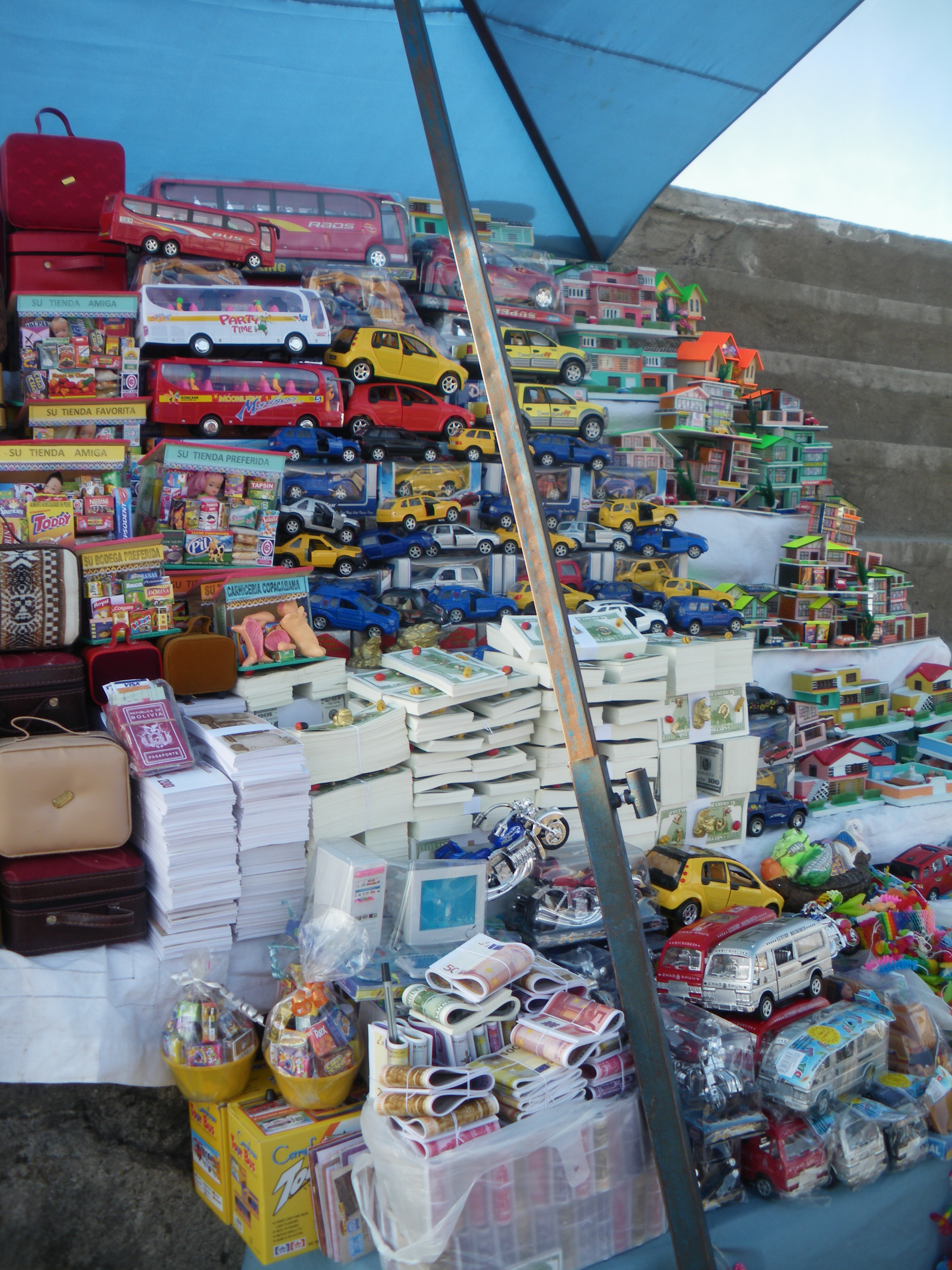
At the top of the hill, more people where making offerings to smaller representations of the Virginita (basically a doll in a glass case), who represents the mother Mary, but also Pachamama. The locals believe that (among other things) you must offer something representative of that which you want to receive. So many people would burn fake money, in the hopes of receiving real money.
The craziest of all however, was the stalls at the top selling small houses, cars and other offerings such as confetti and sweets. Presumably, if you want a new car of a new house, you buy such a small representation, and burn it as an offering to the Virginita.
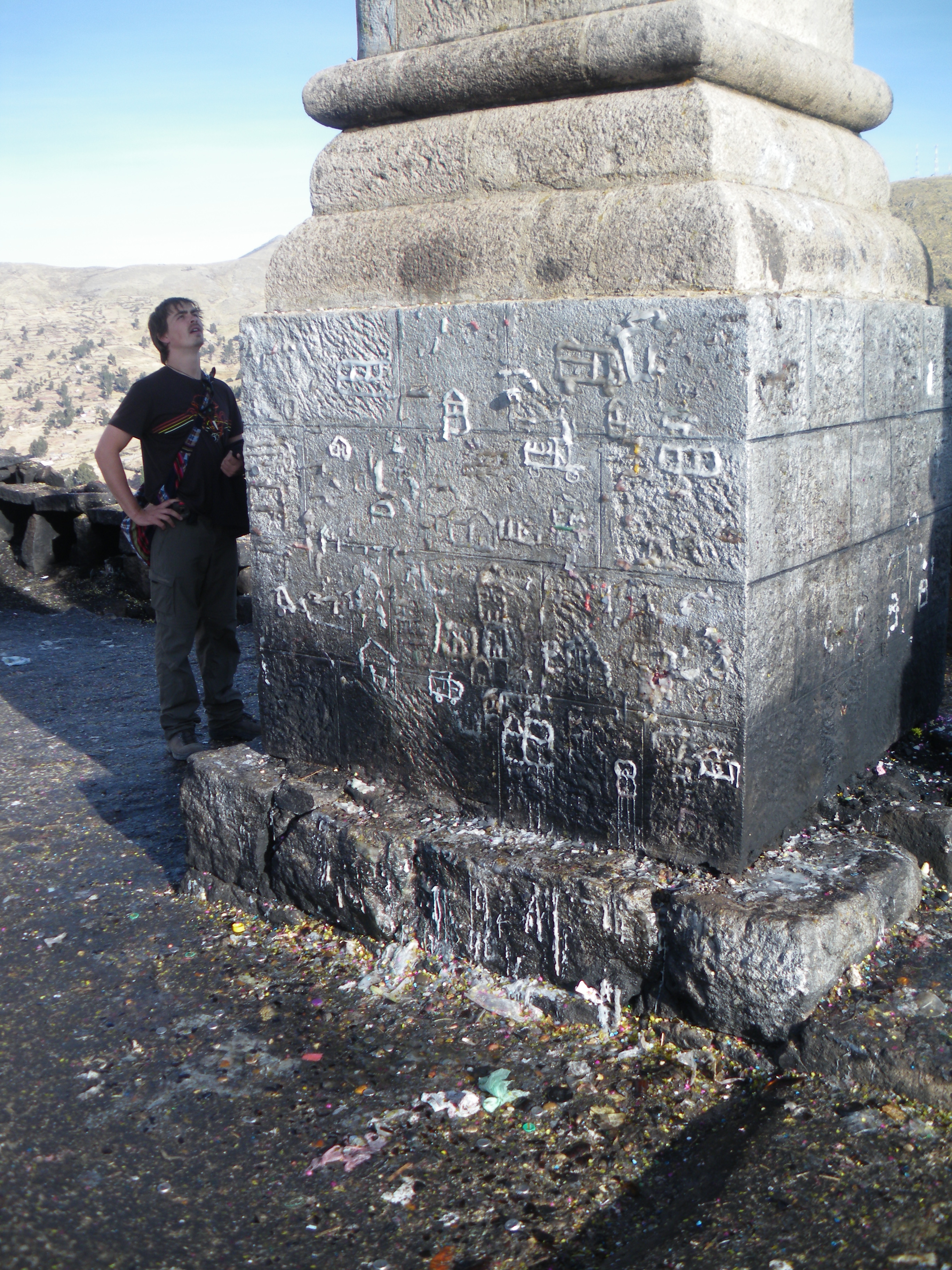
Another strange practice, that we also in a catacomb beneath the church, was the custom of buying candles, burning them and then using the wax to create the outline of the object that you want. As mentioned, at the top of the hill were stone monuments with paintings of Jesus’s crucifixion and resurrection behind dirty glass cases. These stone monuments were completely covered in these wax figures, making them very oily and dirty.
It’s relatively well known (or should be) that Catholicism is a synthesis of early christian sects and some pagan European practices, which makes the fact that there is an ongoing synthesis of Catholicism with the indigenous American/Incan beliefs as found in Bolivia, ever more fascinating.
17 August, Isla del Sol
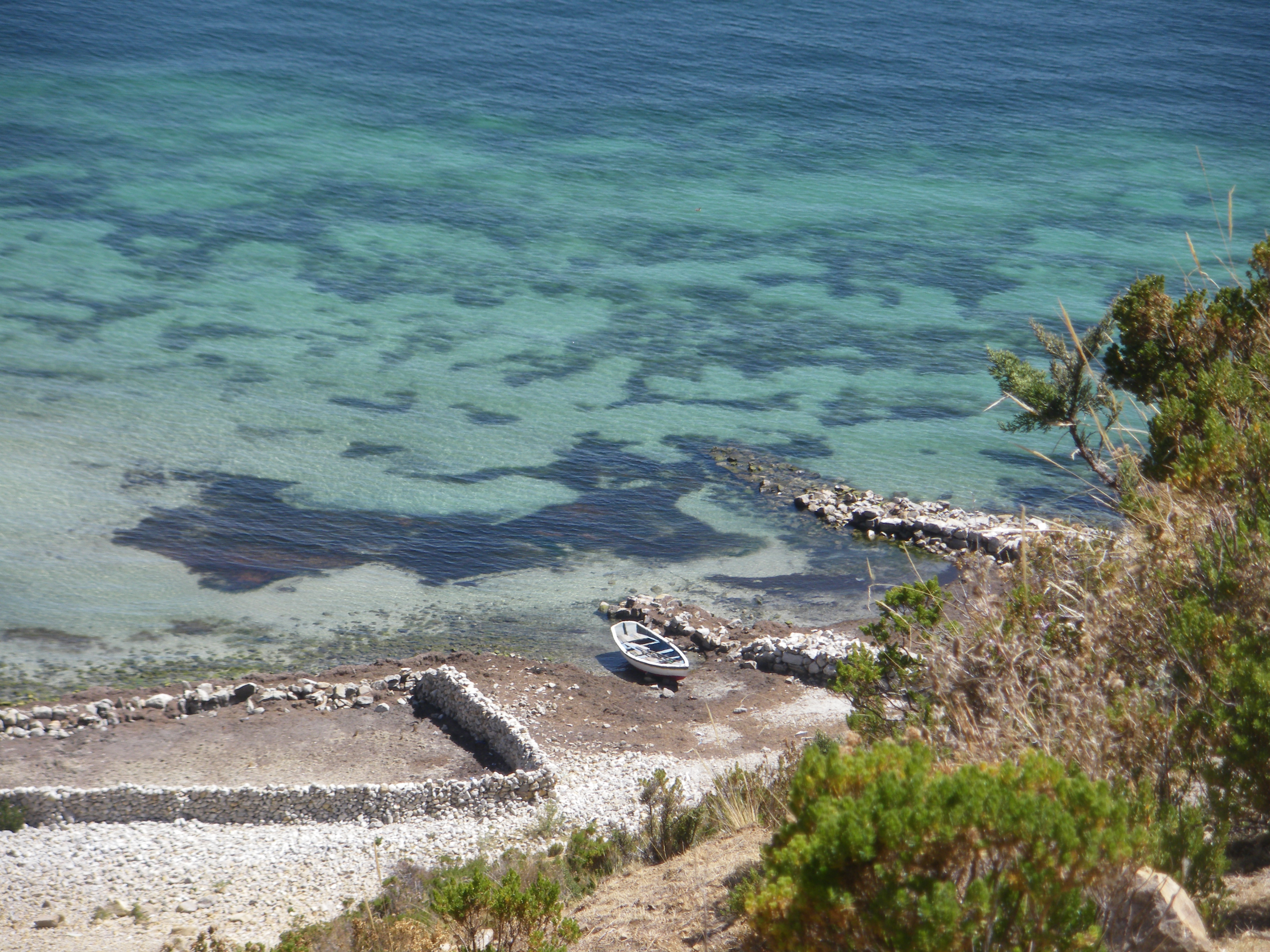
Apparantly, according to the Incas, lake Titicaca was the navel of the world, the place where the first Incas were created and also where the sun and the moon came from.
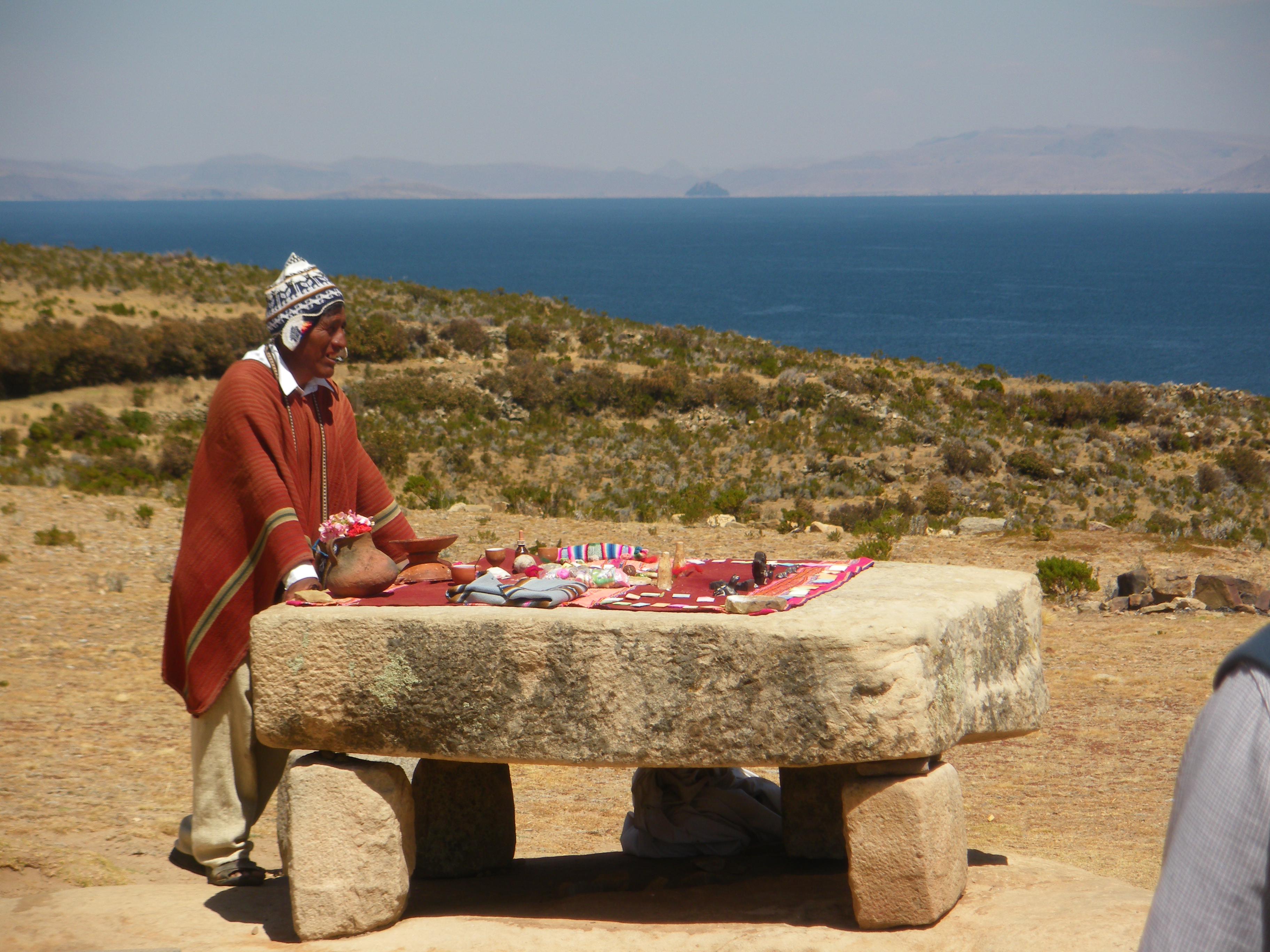
We took the 8:30 ferry to Isla del Sol (Island of the sun) where according to Incan legend, the Incan god Viracocha, the first Incan Manco Capac and his sister (Incan royalty married their sisters) met and where the reign of the Incas began. Nearby is also the smaller Isla del la Luna (Island of the moon), where the ruins of a pre-hispanic Incan monastery that housed virgins to be sacrificed on the sun island, can still be seen. It is said that the sun and the moon came out of lake Titicaca, and that the sun, being jealous of the moon’s bright light, threw dust into its face, thereby covering its light and causing its grey white colour.
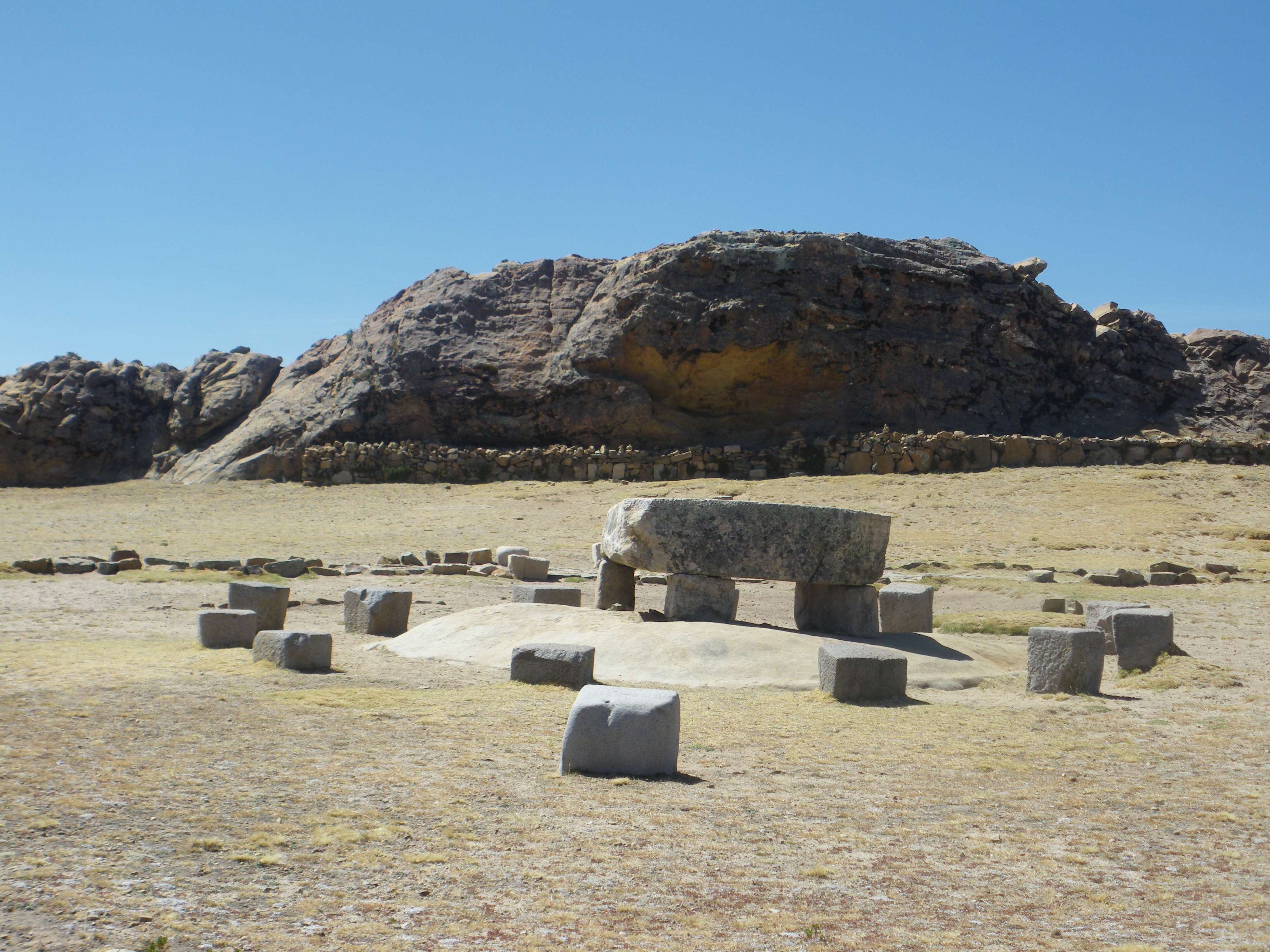
We stopped at the north end of the island, and after a quick stop at a small museum where you could see Incan and pre-Incan artifacts recovered from the depths of Titicaca, we headed off to the ruins at the north end of the Island. We walked to the Piedra Sagrada (holy rock), before continuing to a rock outcropping containing the face of the Incan god Virococha. The Incan’s (and perhaps even pre-Incas) recognised an elongated angry looking face in the rock, considered it to be from a deity and built an altar in front of it on a piece of rock that is so perfectly situated in front of the face that it’s almost eery. We were introduced to a local Curandero Shaman, who still conducts ceremonies at the altar, asking for good harvests or other favours. He explained to us that virgins were sacrificed there in pre-hispanic times, later to be replaced by llamas, and also that there is an energy in the name Virococha and in the names of other deities.

In what is such an incredible coincidence (and blind luck) that it’s almost uncanny, the image of the first conquistador to meet the Incas in the area, Francisco Pizzarro, reminded the Incas of their deity Virococha. An elongated, angry face with a beard. The Incan ruler, Atahualpa killed his half-brother (and heir to the Incan empire) a while before, and the Incas were already tense and scared of what they considered a taboo act by Atahualpa. So when Pizzarro (deemed representative or incarnation of Virococha) arrived, his Incan army of 40 000 men were so terrified of their deity’s wrath, that they fled before the 140 men strong conquistadorean army. This provided Pizarro with a victory that would otherwise have been much less likely.
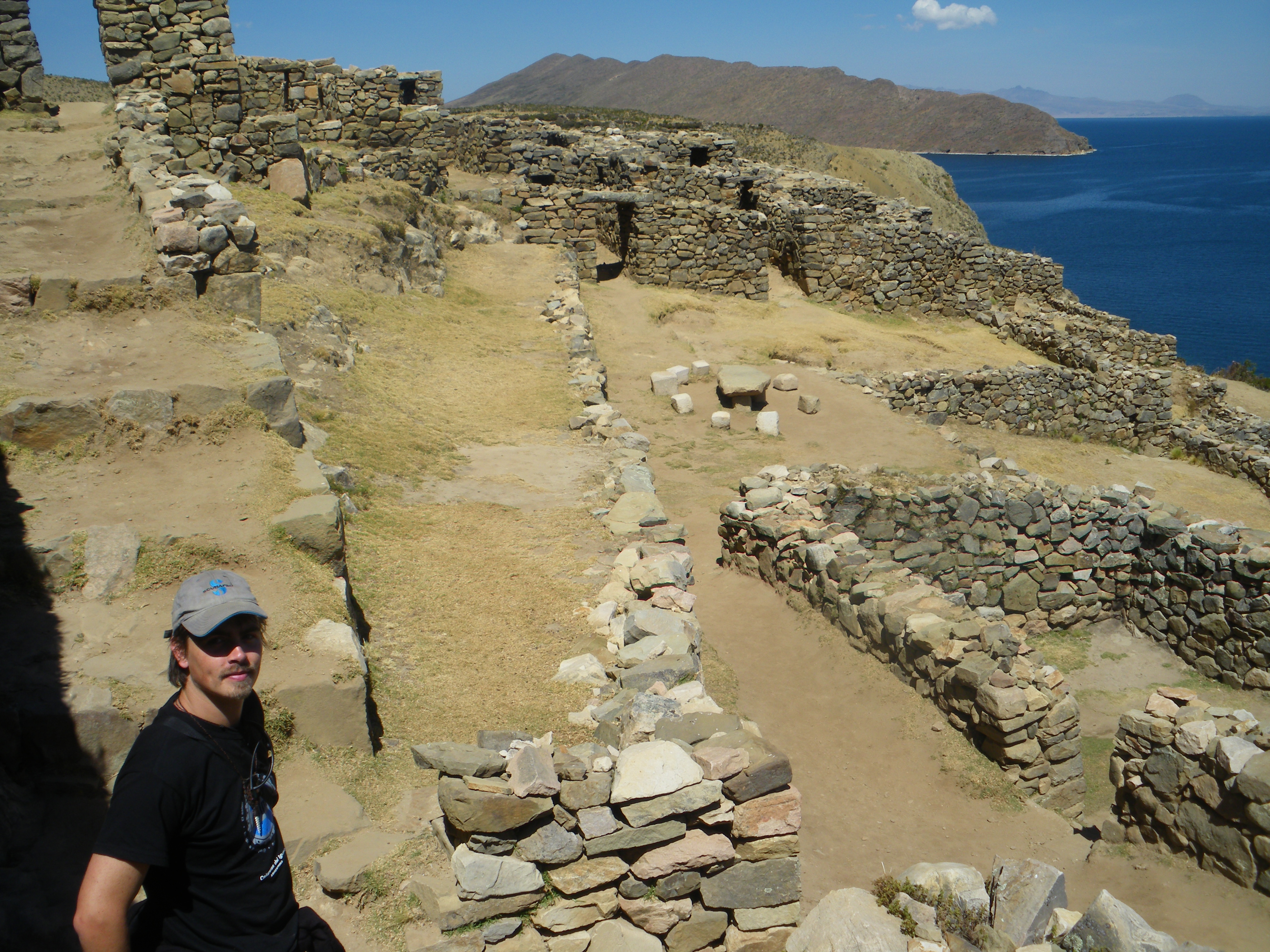
The effect that the Inca’s prophesies and mythologies had in their own downfall and subjugation towards the Spanish, gave me food for thought concerning the ever popular Christian apocalyptic prophesies and their power in actualising some of the events they “prophesize” simply by the power of enough people believing in them (as the Incas believed in their own mythology).
Apocalyptic musings aside, we visited the Incan palace nearby, where Atahualpa first met Pizarro and offered some of his gold in turn for his life. Pizarro instead decided that he wanted all of the gold and then killed Atahualpa.
After visiting the ruins, we started walking along the ridge of the Island towards the south side which took us the whole day, ending at a restaurant with a spectacular view of the sunset over lake Titicaca.
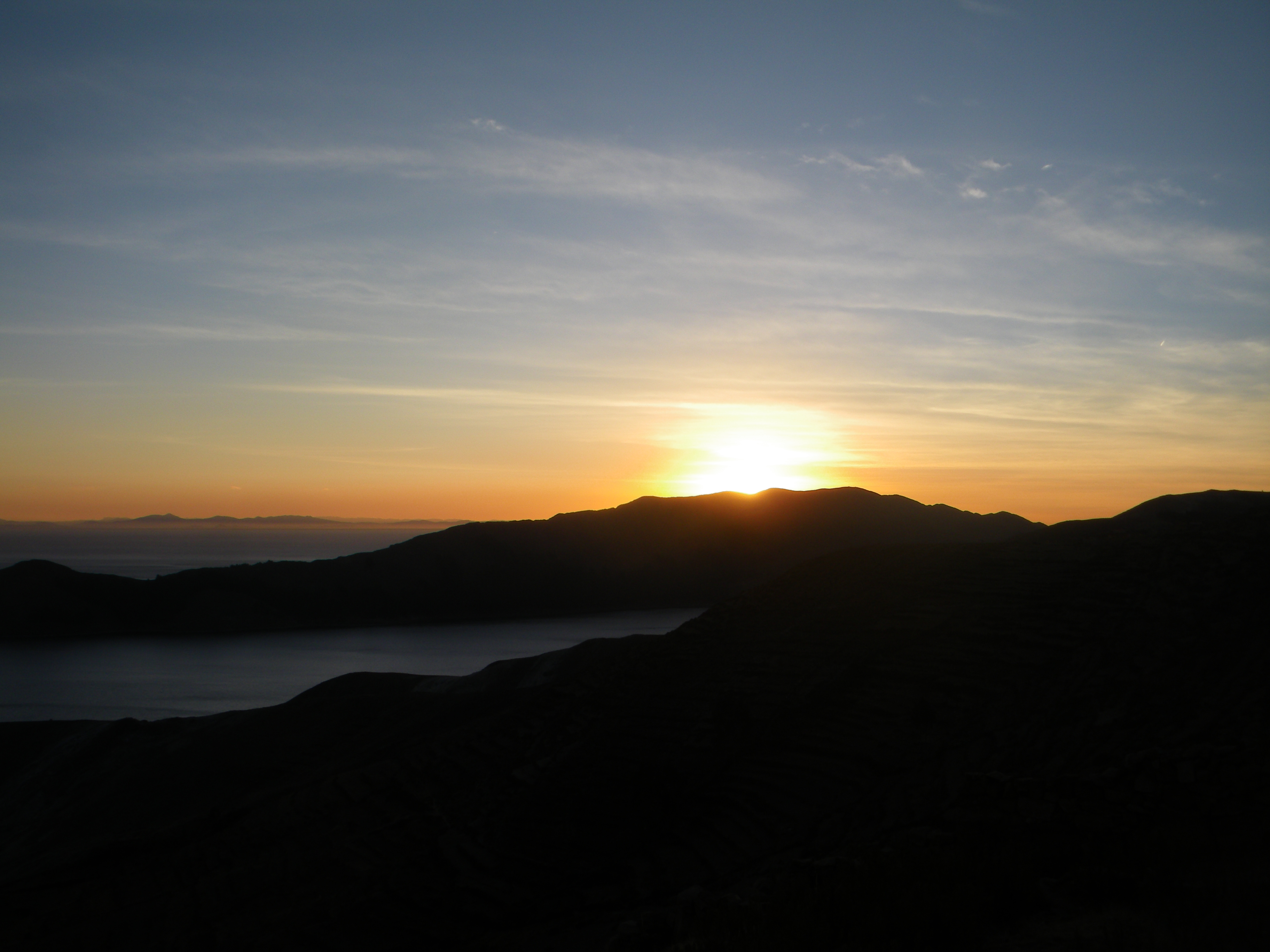
19 August, Traveling to Arequipa, Peru
We took the early morning bus to Arequipa in Peru, a 9 hour journey. Along the way we saw impressive hilled landscapes with herds of llamas and a lake with pink flamingoes. Unfortunately the bus driver drove like a maniac, speeding, honking incessantly and making the whole bus sway from side to side, causing Manuela and I to become car sick. The unpleasant bus journey was however lightened up a bit by a guy who sang while playing a peruvian flute and a Jukelele.
So far Peru seems very much like Bolivia. As in Bolivia, many people paint the walls of their houses with political advertisements for their preferred candidate for the local governor. Sometimes a large rock in an outcropping in the middle of nowhere would be painted with a political party’s emblen, name and slogan on a white background. I am much more aware of the local politics in Bolivia and Peru than during our time in Argentina and Brazil.
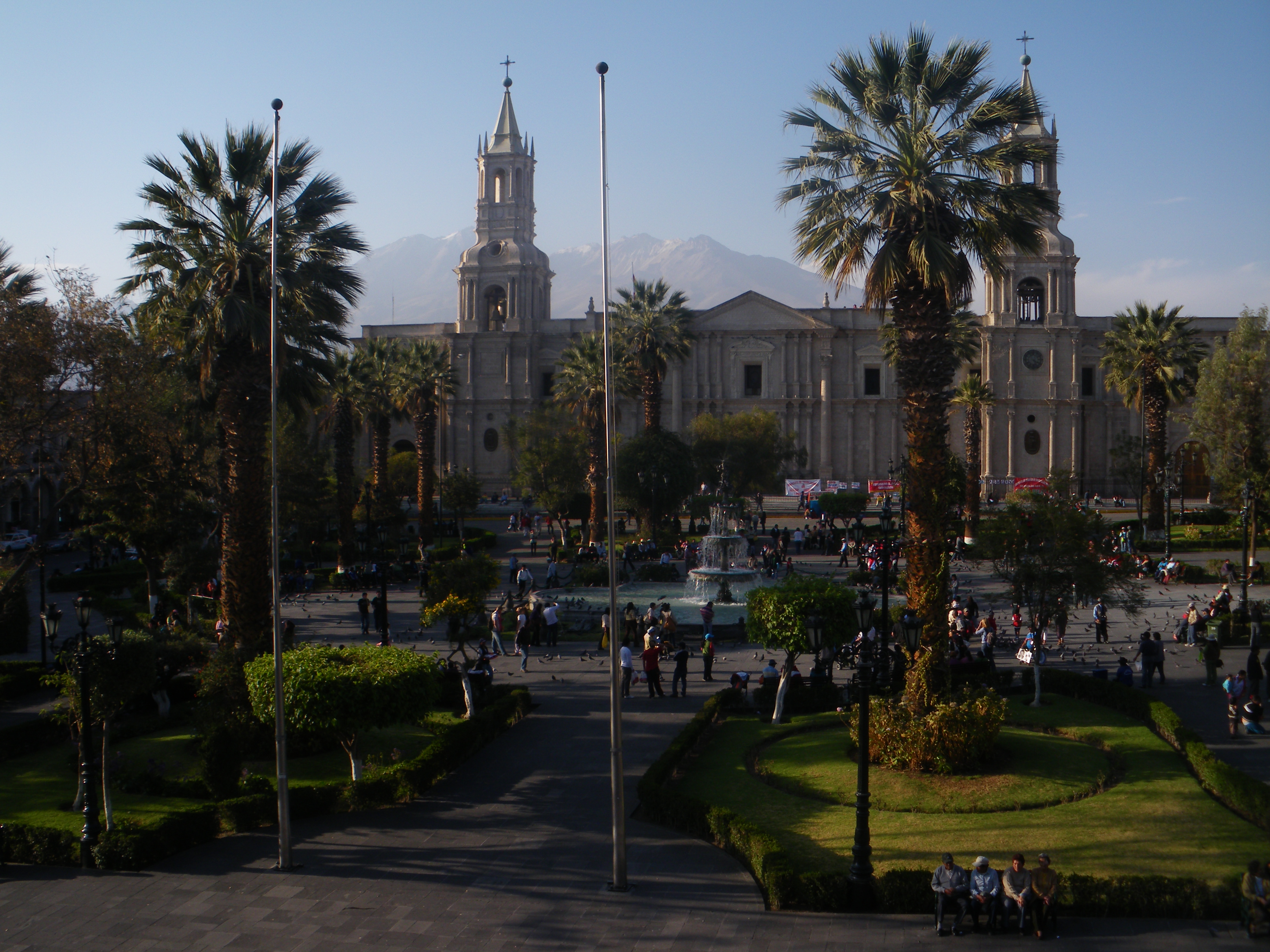
21 August, Arequipa
After staying in our third so-called “party hostel”, which are very popular among backpackers, we’re quite disappointed with the level of sophistication and maturity of many of the backpackers we encounter. A lot of them treat the experience the same way teenage adolescents would treat a school trip, flirting and jockeying for attention or popularity, drinking every night before throwing up and then bragging about it the next day, and generally acting as if they are still somewhere in Europe, Australia or North America. One highlight was a drunk couple coming back to our 6-bed dorm after partying until about 3:30 am, and then proceeding to have very noisy sex, in the process waking everybody up and all without even the slightest appology.
This is of course a gross generalisation, and we have met many open-minded, knowledge hungry and genuinely interesting travelers along the way, but usually not in “party hostels”.
22 August, Arequipa

Coming in to Arequipa, we saw a lot of poor neighbourhoods with dirty unkempt buildings. The city center is quite the opposite however, with lots of renovations being done in the streets around the main square. Arequipa is surrounded by three big volcanoes, and the colonial buildings in and around the square have been built with the white “sillar” volcanic rock, lending it it’s reputation as the “white city”.
In the afternoon we went to the local “Santuary” museum, where the frozen remains of “Juanita”, a twelve year old Incan ritual sacrifice victim is on display. The Incas sacrificed children, seen as pure and unspoilt, to win the gods’ favour whenever they fell on hard times. In the 1400s, the Incan empire was plagued by an erupting Volcano (near Arequipa) followed up by a drought. Juanita was the daughter of a family of very high social standing, who was taken from Cusco, all the way up to a very high Volcanic mountain to be sacrificed. The Incas believed the mountains were the realms of the gods and the weather patterns and tribulations they faced going up there, were the gods response to their presence.
After her death, Juanita was wrapped in fine cloth and buried with a collection of symbolic and sacred objects. For the next 500 odd years, she remained frozen in the -20°c temperature, untill she was discovered in the thinning ice of yet another volcanic eruption in 1995.
The musuem and the staff were very professional and well worth a visit. A far cry from what we had become accustomed to during our time in Bolivia.
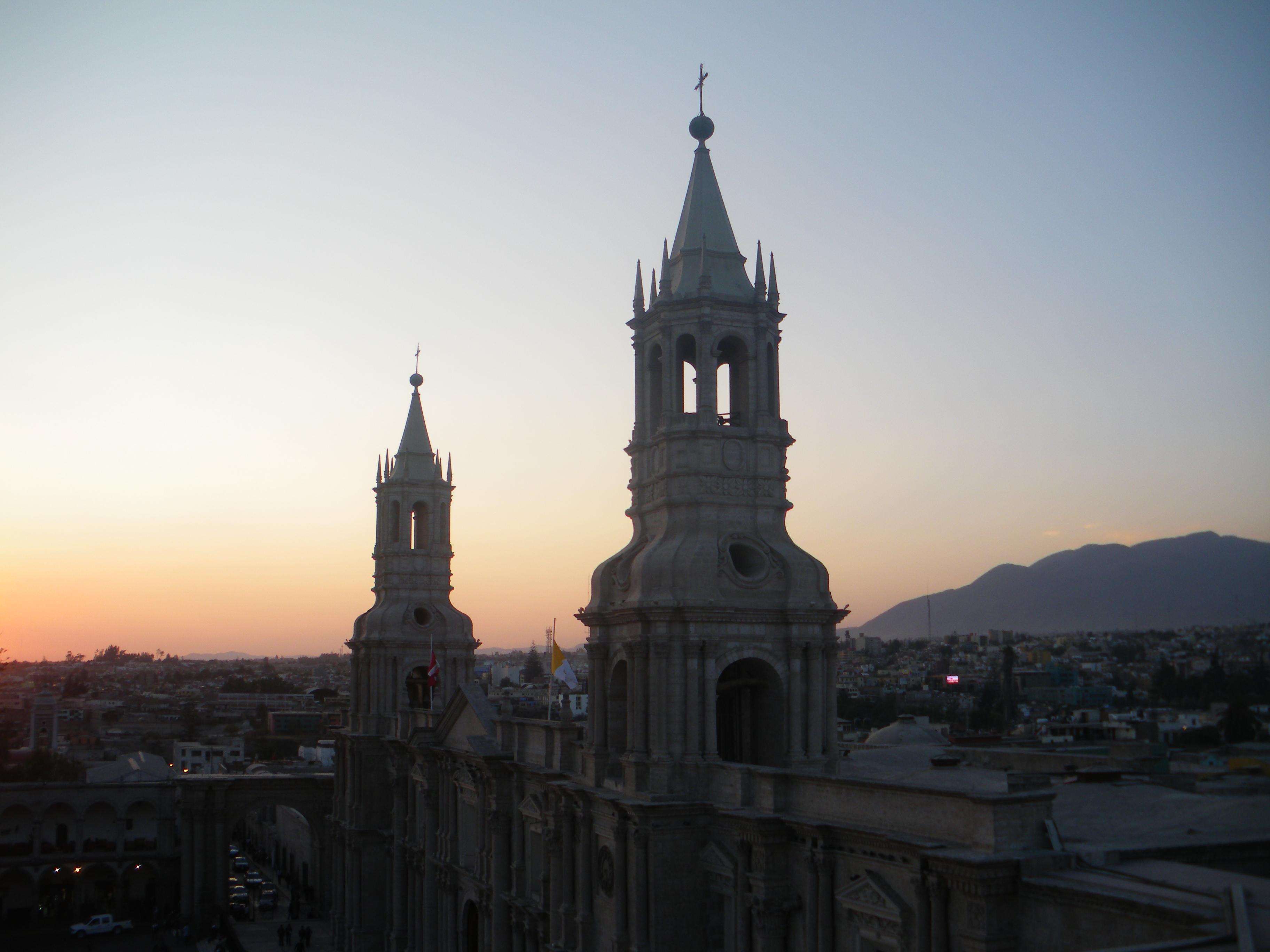
23 August, Mountain biking at Volcano Misti
After having so much fun mountain biking down the death road in La Paz, we decided to have another mountain biking adventure at the Misti Volcano. We got picked up early in the morning and drove out to the foot of the Volcano, getting nice views of Arequipa as we left the city limits. The outskirts are not so soft on the eye (to put it euphemistically) as the city center. Peruvians stream into the city looking for a better life and construct shabby looking brick buildings on the outskirts. Often the walls are left unrendered and unplastered, leaving the houses looking ugly and unfinished.
New communities made up of these buildings appear quite quickly at the edges of the city, where there is no water, sewage or electricity infrastructure. After some time the new residents start to demand basic services and eventually the government provides them, together with property rights. In this way, the city grows in a haphazard and disorganized way and making the outskirts very unattractive. It must be said however, that these people at least build brick structures, so it’s still a few steps ahead of squatters and shanty towns of which we have seen surprisingly little in South America.
A little bit up at the foot of the Misti, we got stopped and geared up to bike down to the bottom. It was quite a bit more difficult and technical than in La Paz, but still an incredible amount of fun! We then drove to another small rural town and mountain biked there as well, before returning to town for lunch at Mistica café in Calle San Francisco. Secret tip: The best lunch we had in town and for only 8 soles each.
24 August, Trekking the Colca canyon
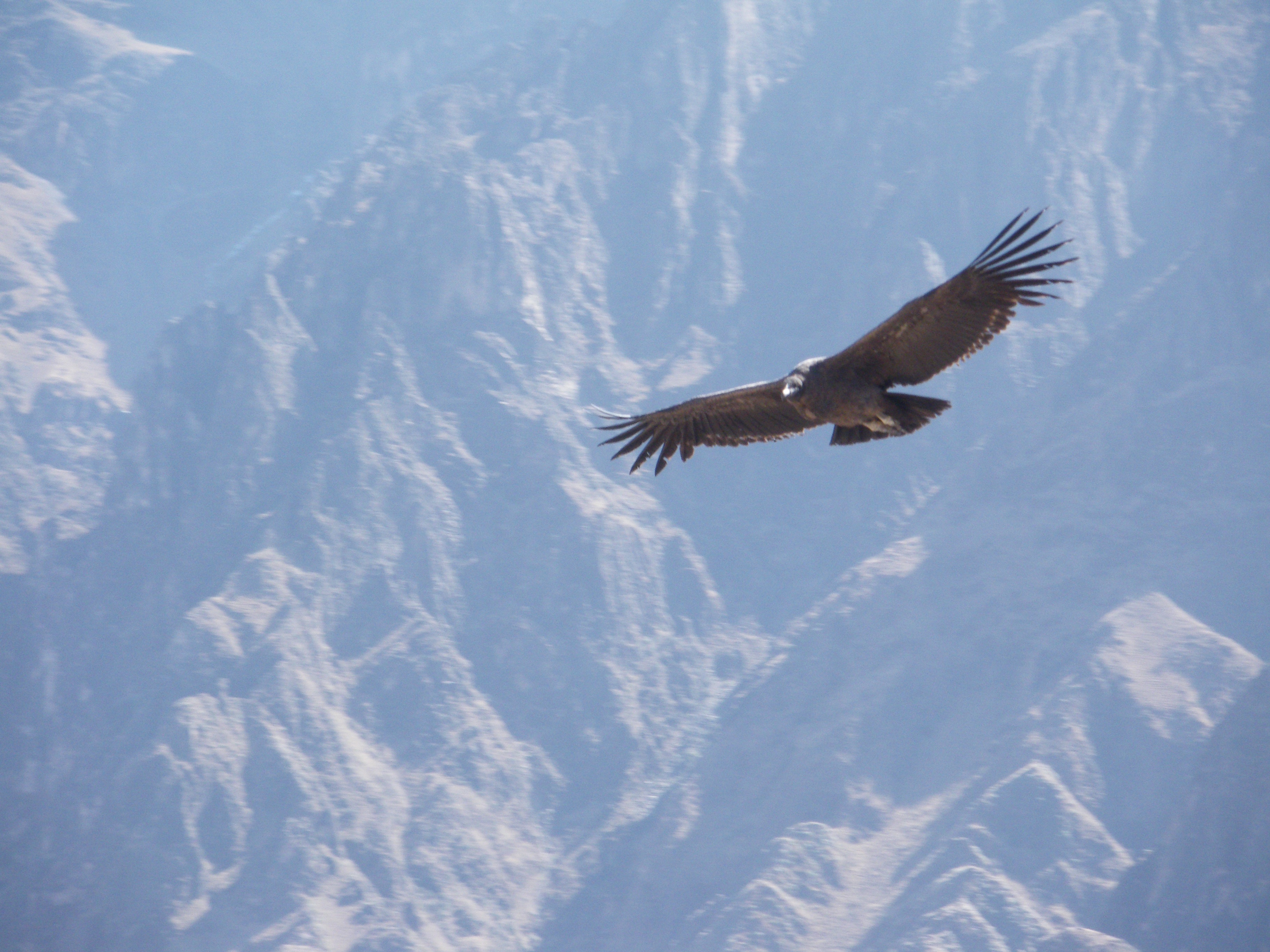
The Colca Canyon, outside of Arequipa, is reportedly the deepest canyon in the world, twice as deep as the Grand Canyon and averages a depth of 3400 meters for a length of 100 km.
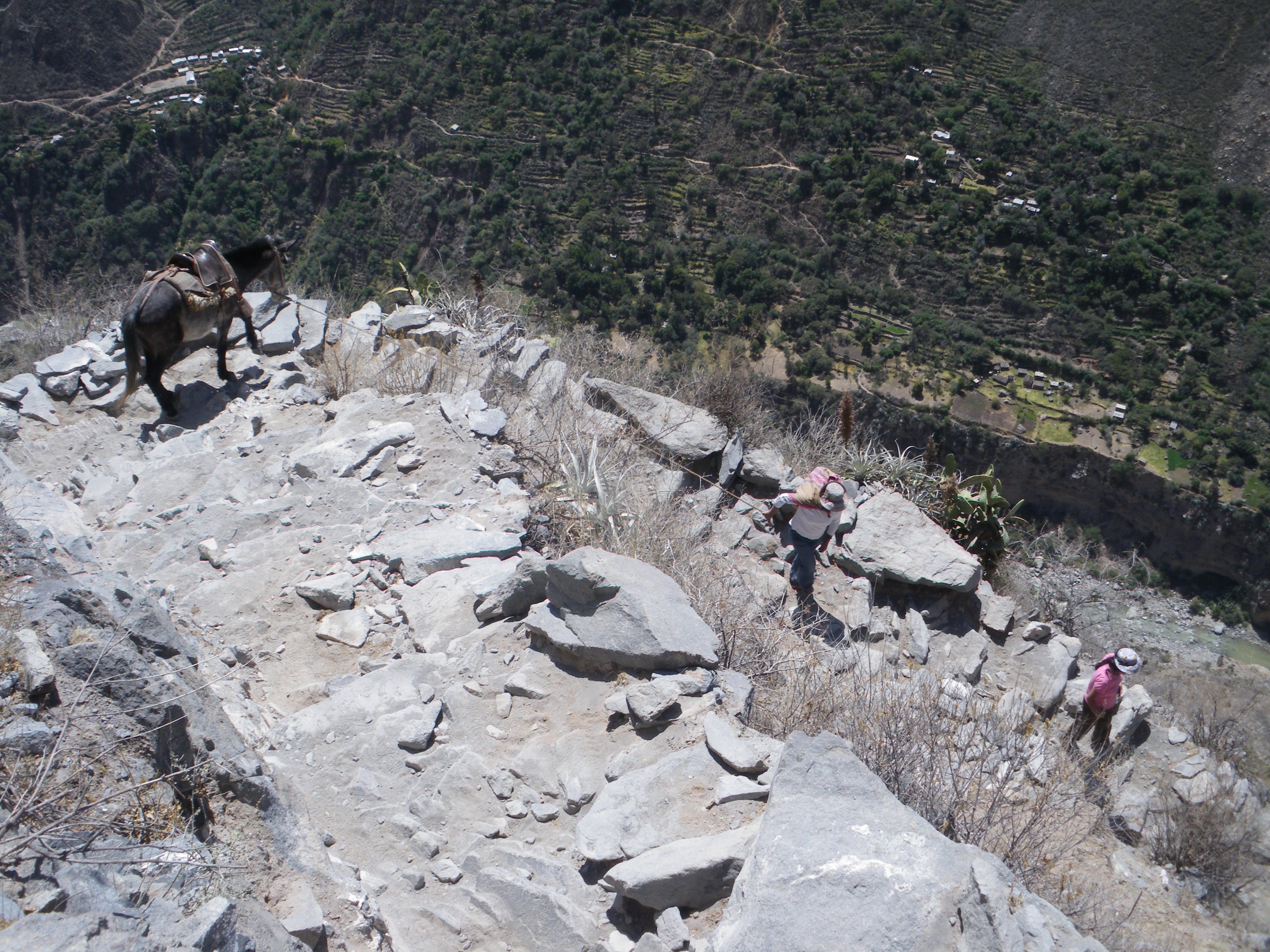
We booked a tour for two days and left at 3:00 am the first day to the town of Cabanaconde to start hiking down the canyon. A while before we stopped at a well known Condor lookout point for breakfast and another opportunity to spot some of these majestic birds. What awaited us there completely surpassed our expectations. Condors were floating on the rising thermals right in front of the viewpoint and sometimes less than 5 meters away! About 8 condors seemed to be in the area, seemingly unperturbed by the dozens of tourists snapping away with their cameras.
The hike down to the canyon took the rest of the day, about 7 hours in total and 14 km in length. We spent the night at the so called (and well deserved) “Oasis”, with a pristine rock pool of fresh 22° mountain water. The accommodation consisted of huts with thatched roofs and mud walls and floors. Basic but part of the fun and atmosphere.
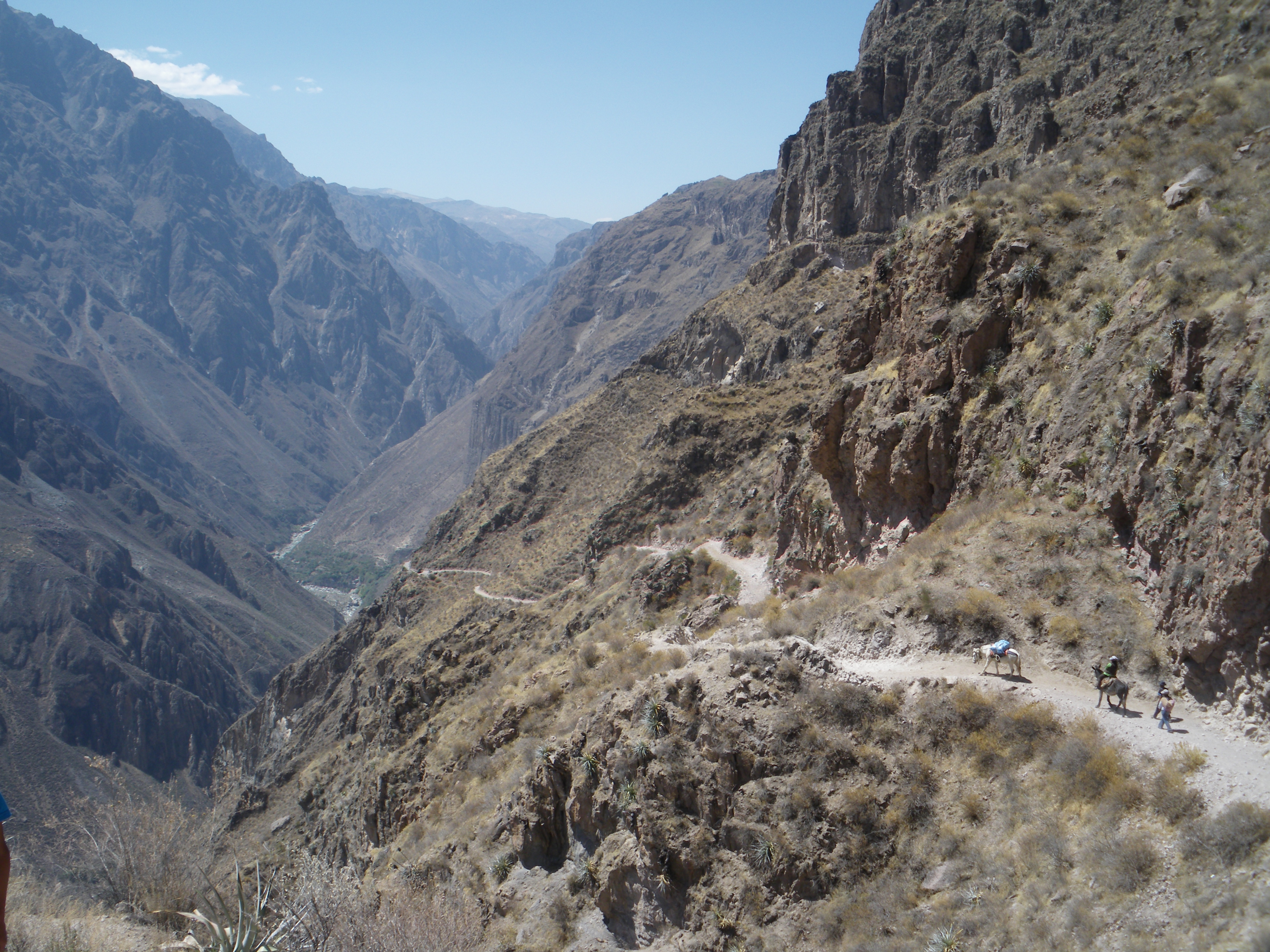
25 August, Trekking the Colca canyon
On the last day of the Colca canyon treĸ, we woke up at about 4am to hike back up and out of the canyon. It took us about 2 hours and 45 minutes (3 hours being the average) to complete the 6km long and 1km high hike out of the canyon. It was quite a challenge because it was so steep, but also good training for the hike to Choquequiraothat we would later attempt. Part of the hiking trail up and out of the canyon can be seen in the photo below:
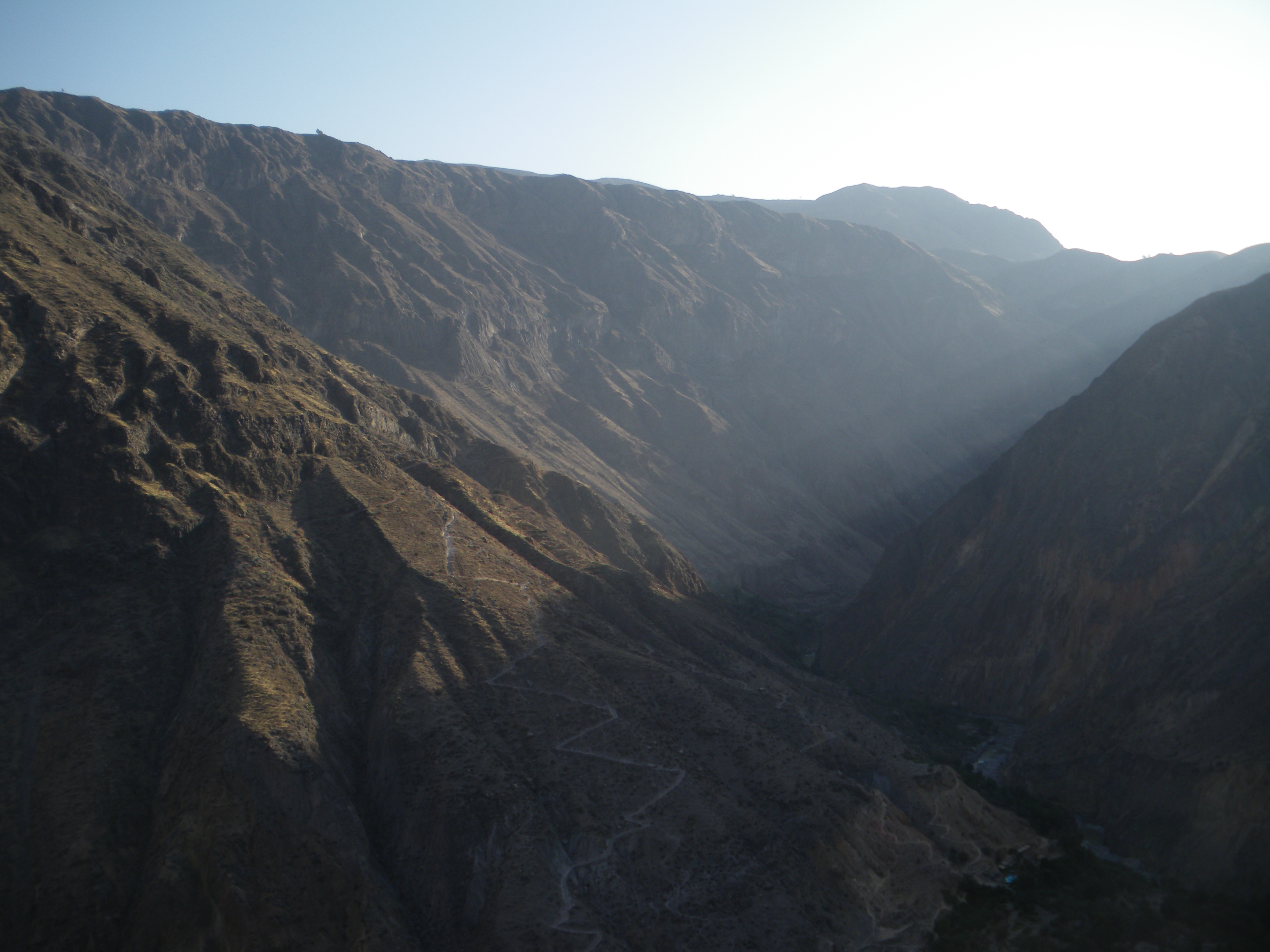
The rest of the day was mostly spent driving in the bus and watching the scenery, including a majestic view of a nearby valley covered in terraces (seen below) some perhaps dating from the Incan times, before visiting some hot springs where we could relax our aching muscles.

27 August, Leaving to Cusco
At the end of the month, we left for the famous city of Cusco, were we’ll be visiting two lost Incan cities. Machu Picchu and the lesser known Chocequirao.
That we will leave for next month however, and for the next blog entry. :)
P.S. Think twice before using Escandinavia tour agency in Arequipa, Peru
We booked the mountain biking and Colca Canyon activities through a local tour company (Escandinavia) located in the main square (Placa de Armas) in Arequipa. The agency is run by a Peruvian named Edgar, who speaks good English. We were quite happy with the tours he booked for us, but unfortunately things changed for the worse later when he made an erronous bus booking for us, for which he lost an entire day. Afterwards we caught him lying to us about having someone to pick us up in Cuzco, and he also didn´t pay (as promised) the deposit of a booking we had to cancel because of his mistake. The fact that he made a mistake in booking our bus could be overlooked, but after he lied to us and also neglected to fulfill his promises, we feel it’s necessary to warn others. The staff at the Point hostel in Arequipa also later informed us that - after some disappointments - they do not make use of his services anymore.
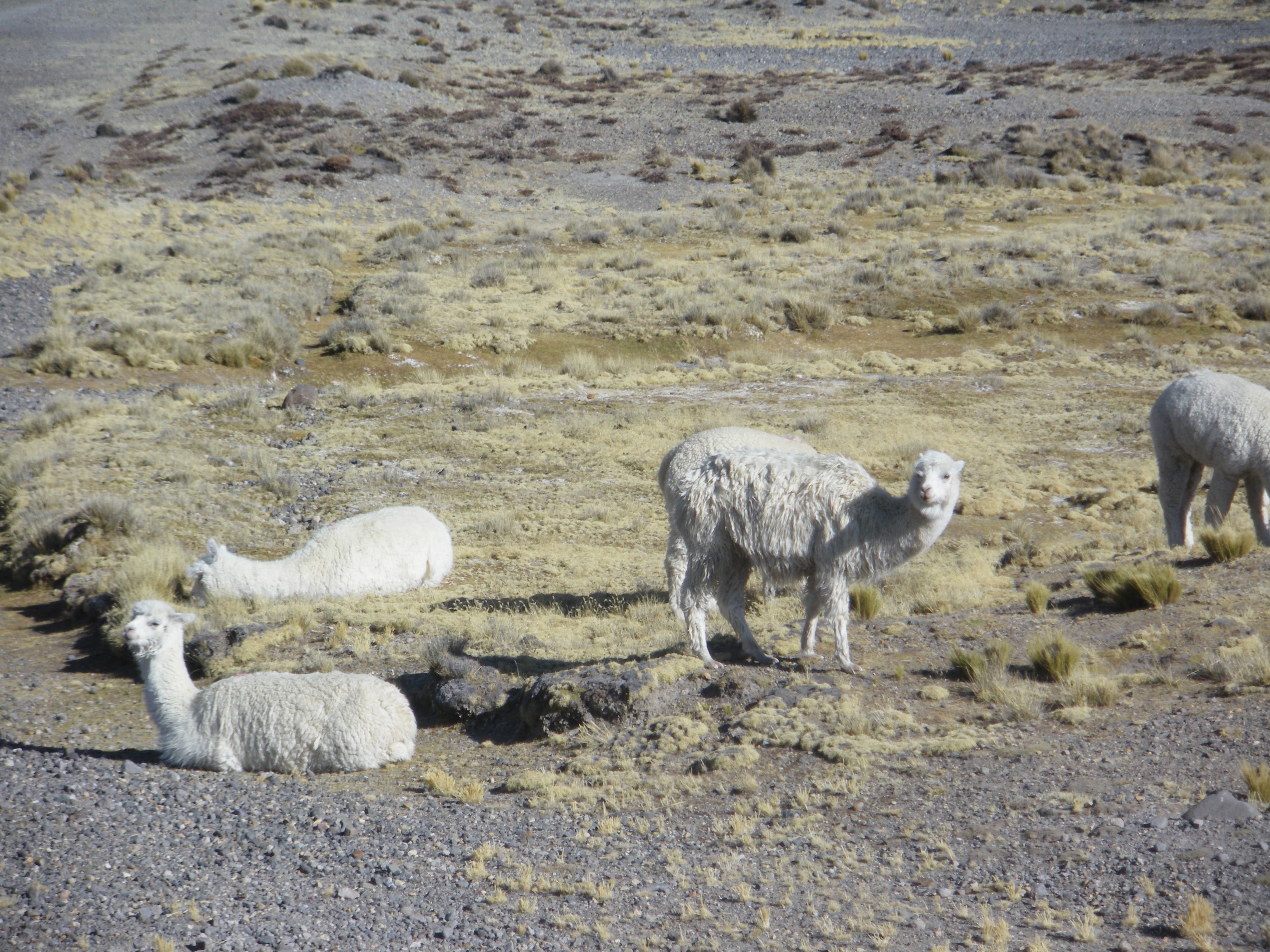
Hello, I'm JC Brand, software developer and consultant.
I have decades of experience working with open source software, for governments, small startups and large corporates.
I created and maintain Converse, a popular XMPP chat client.
I can help you integrate chat and instant messaging features into your website or intranet.
Don't hesitate to contact me if you'd like to connect.

